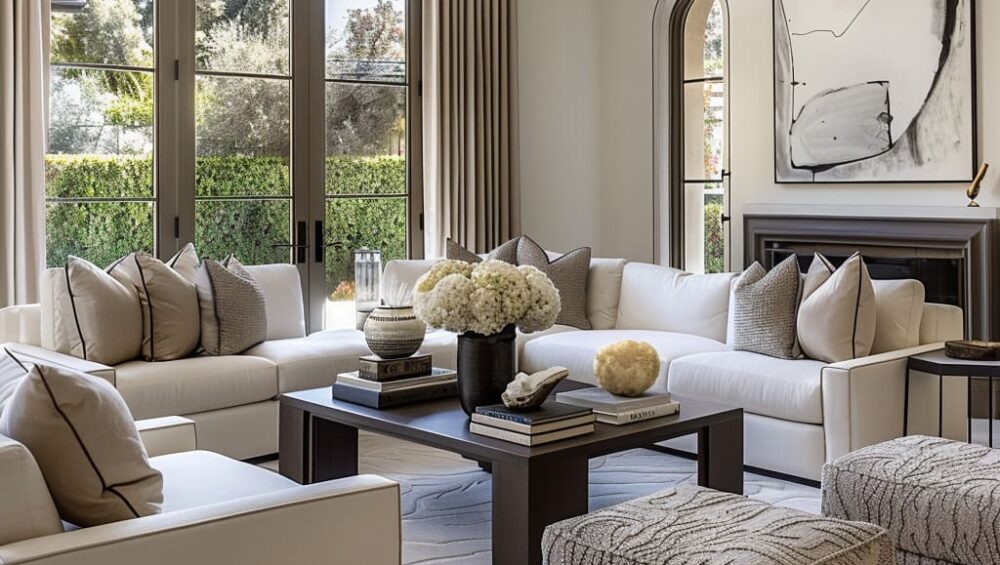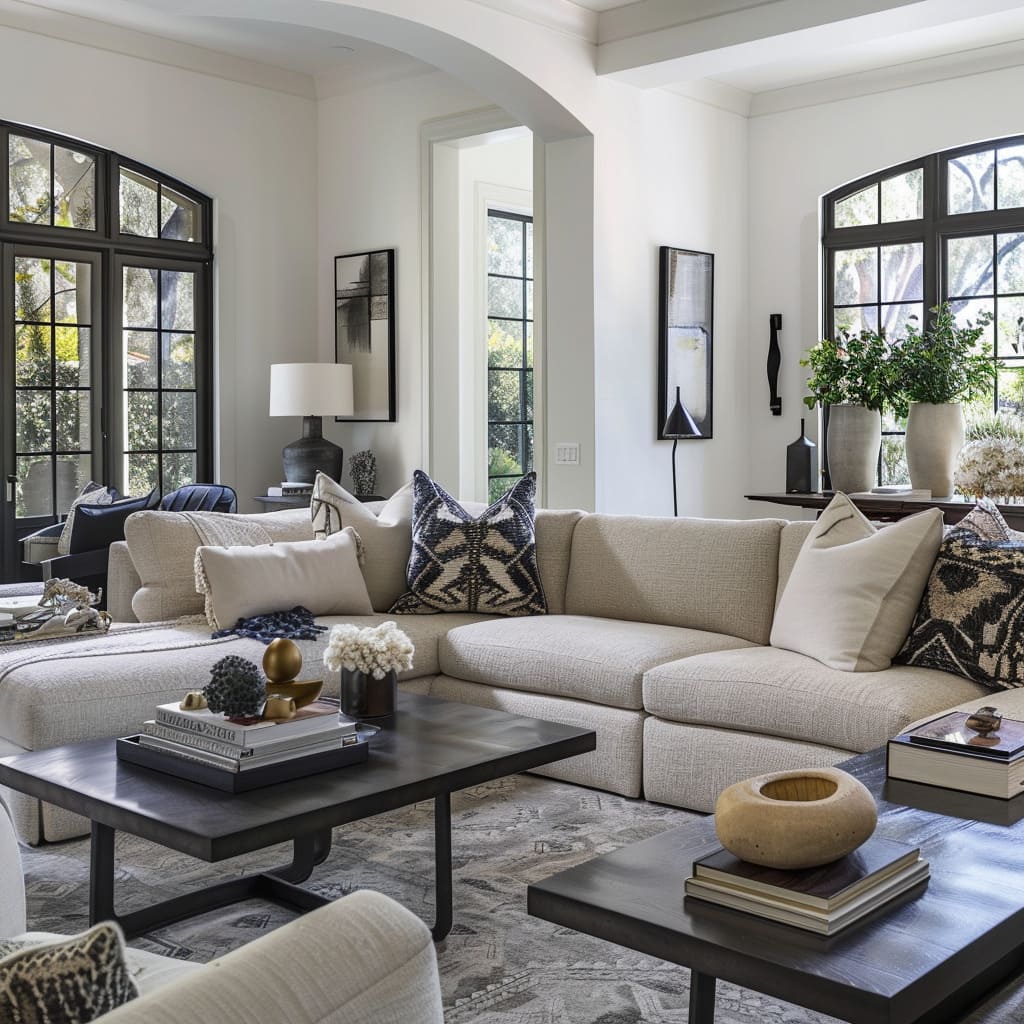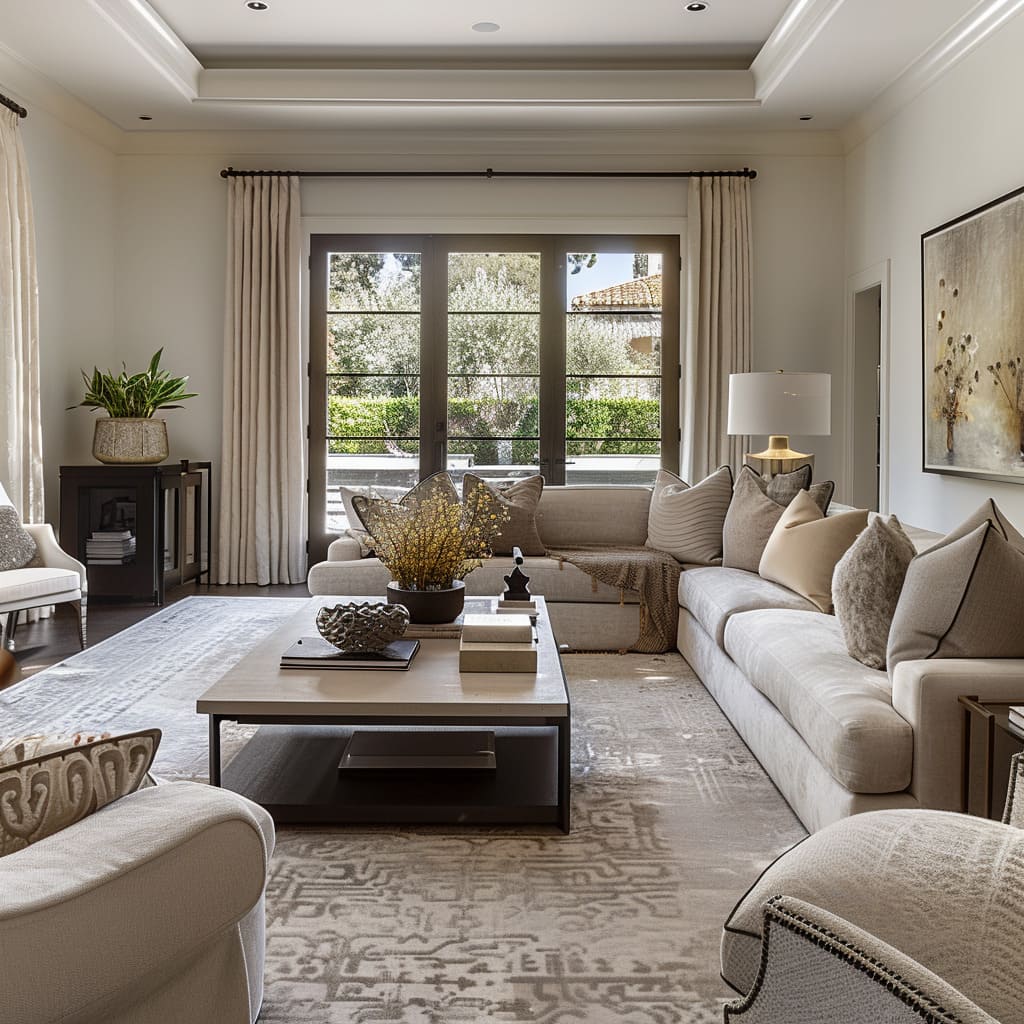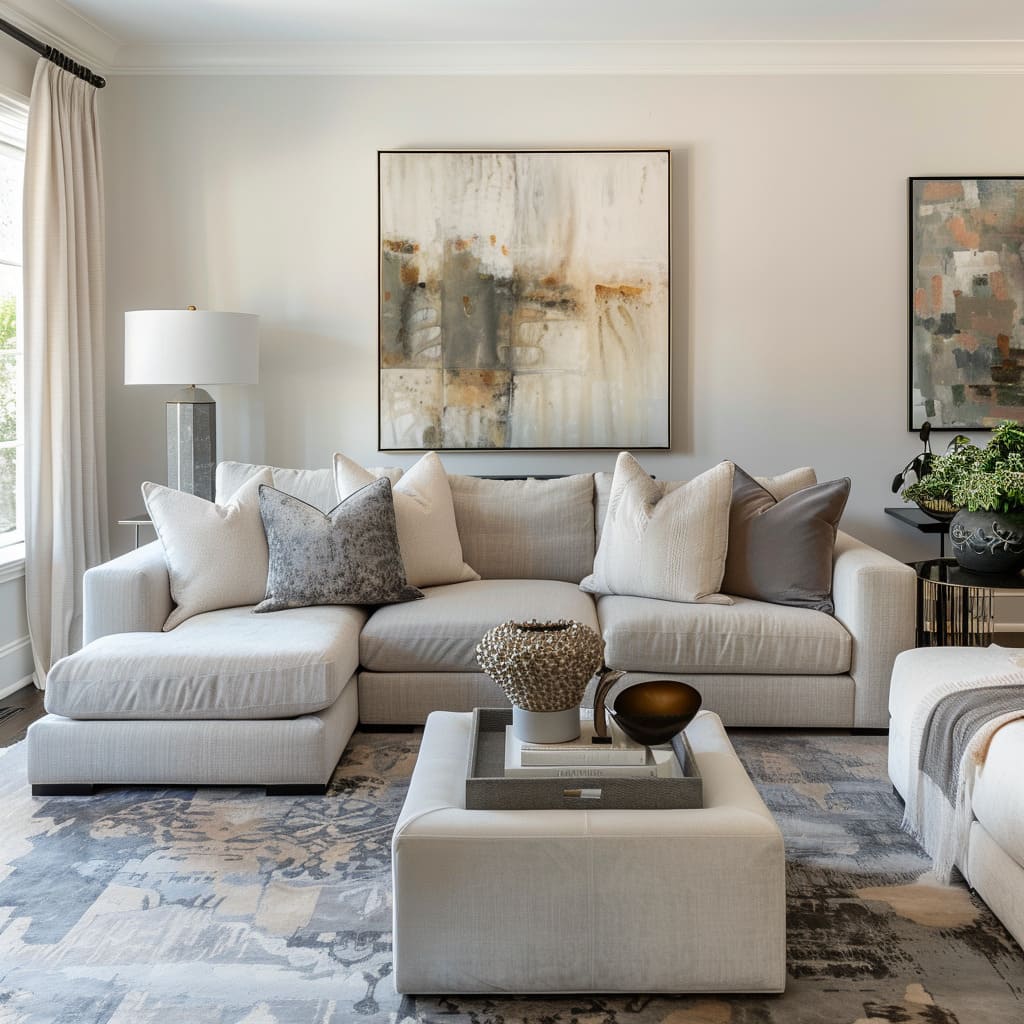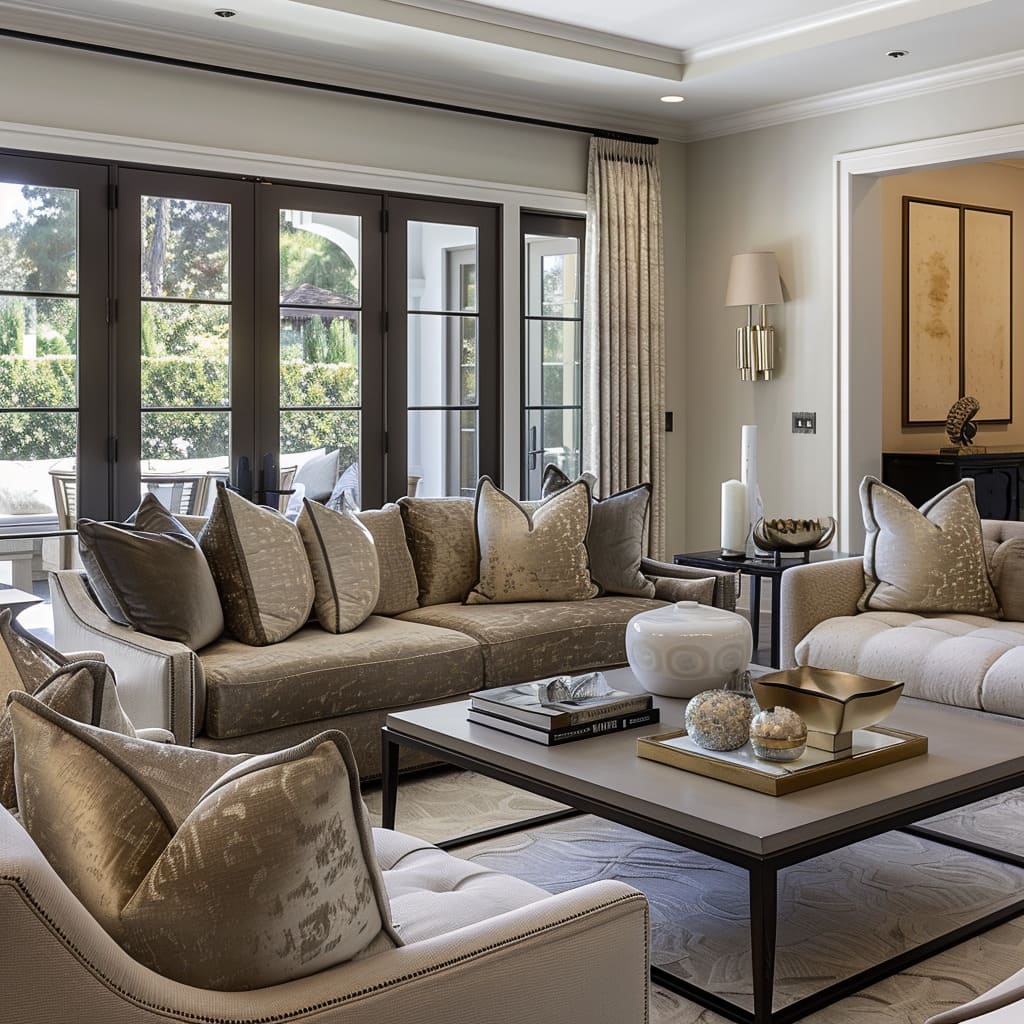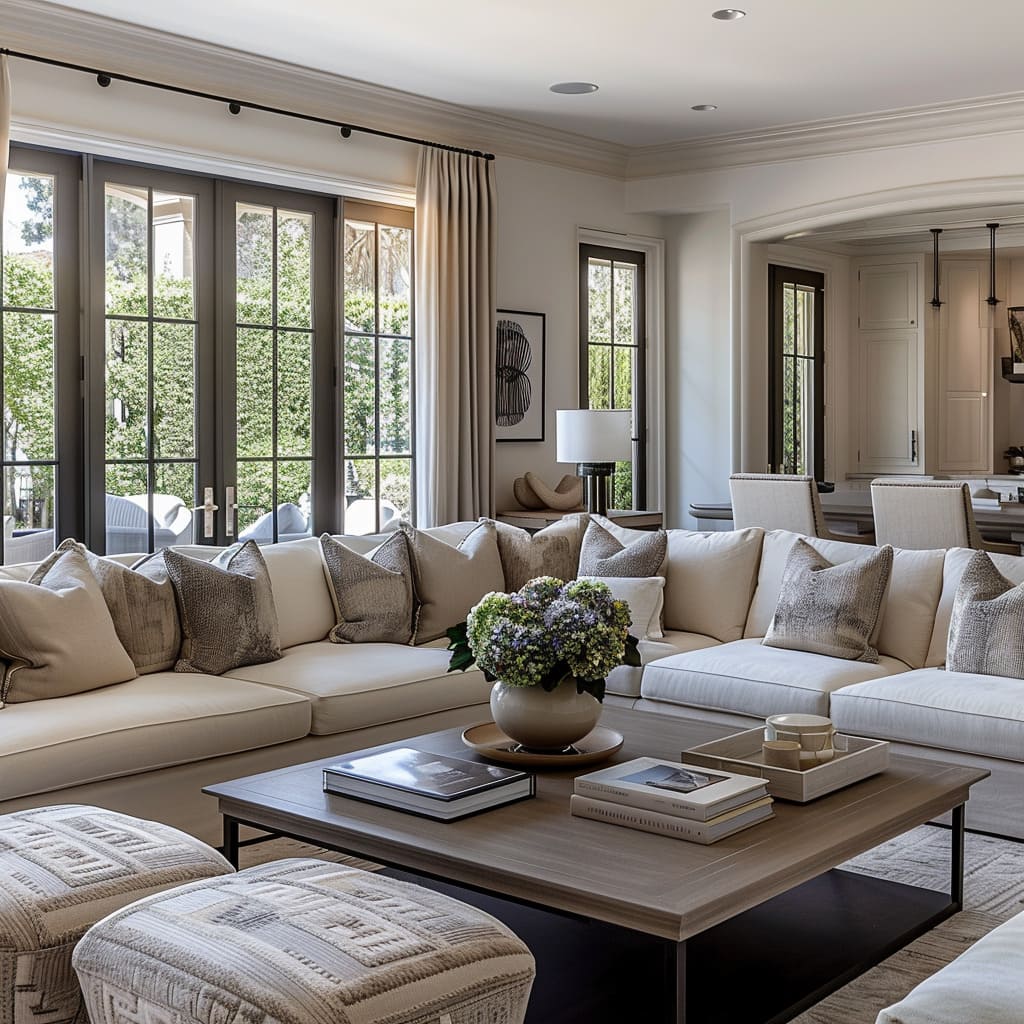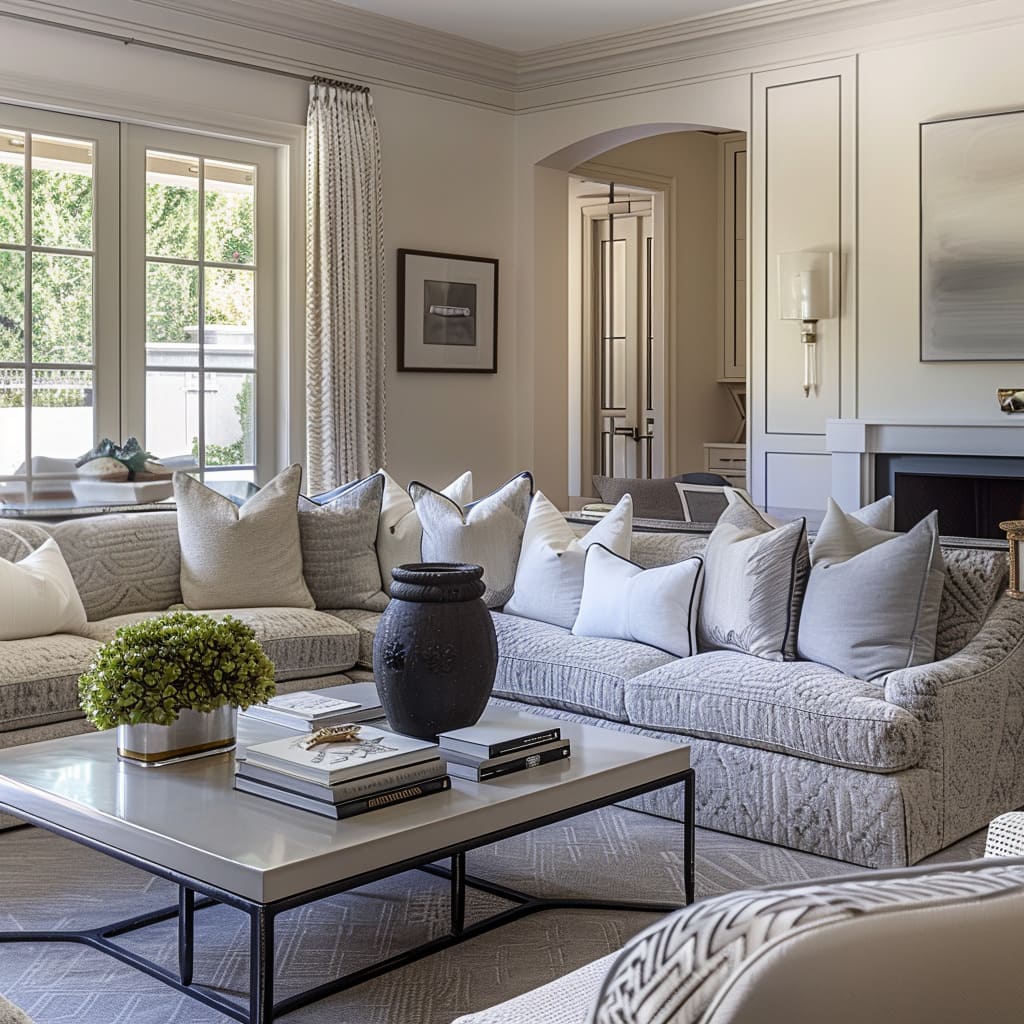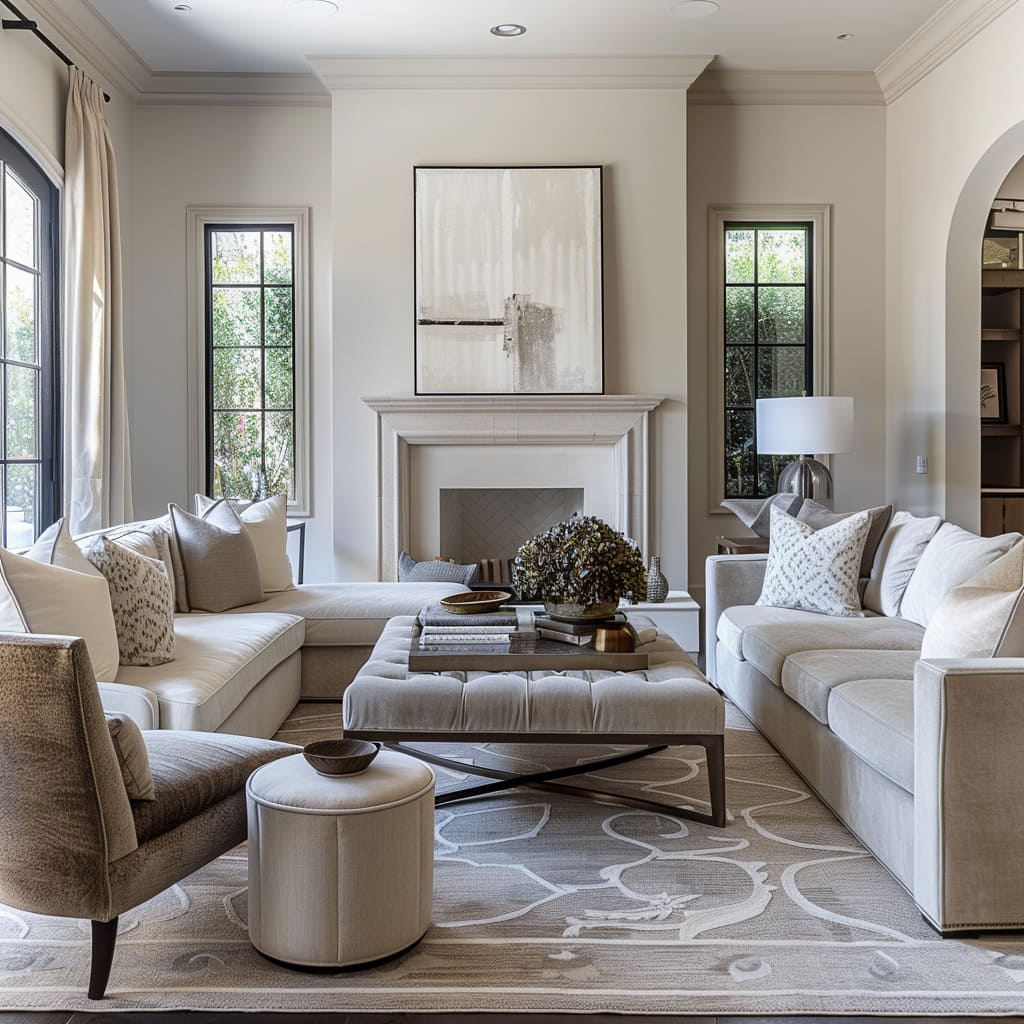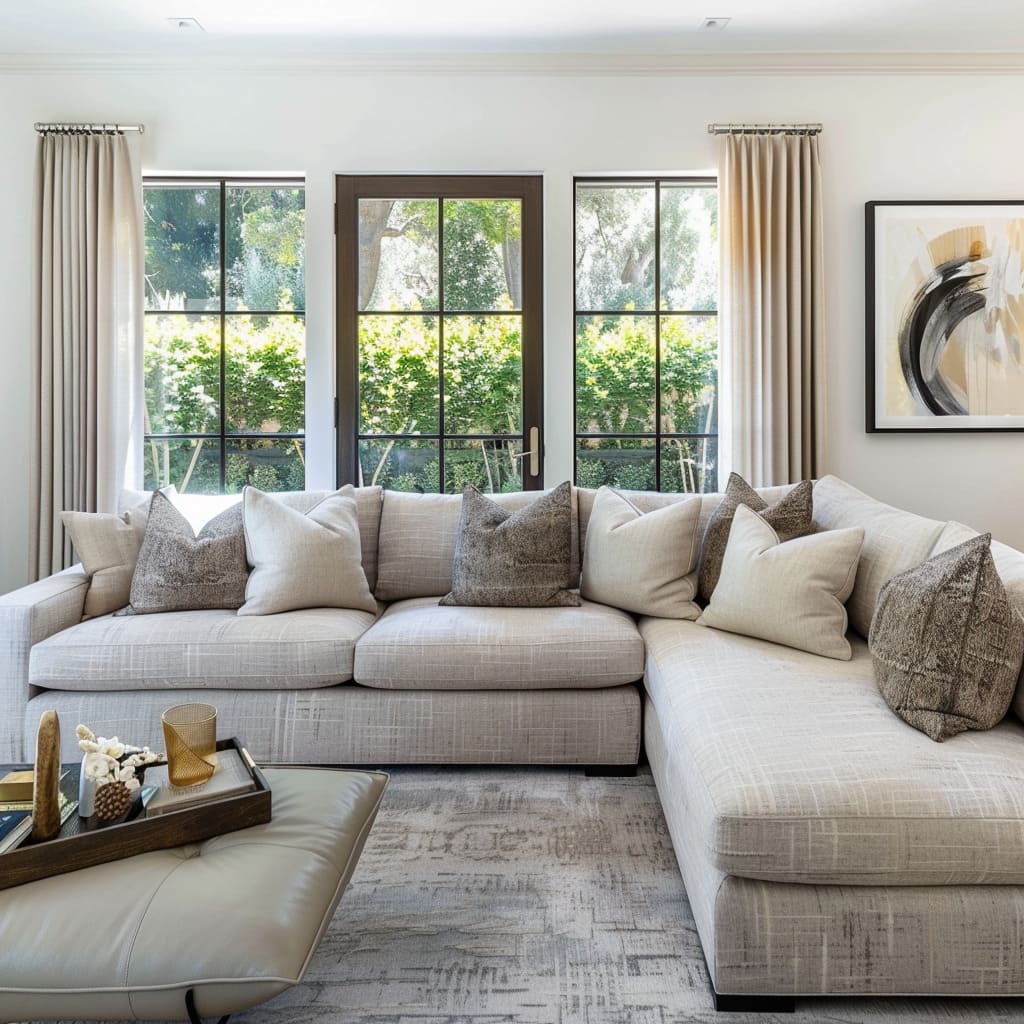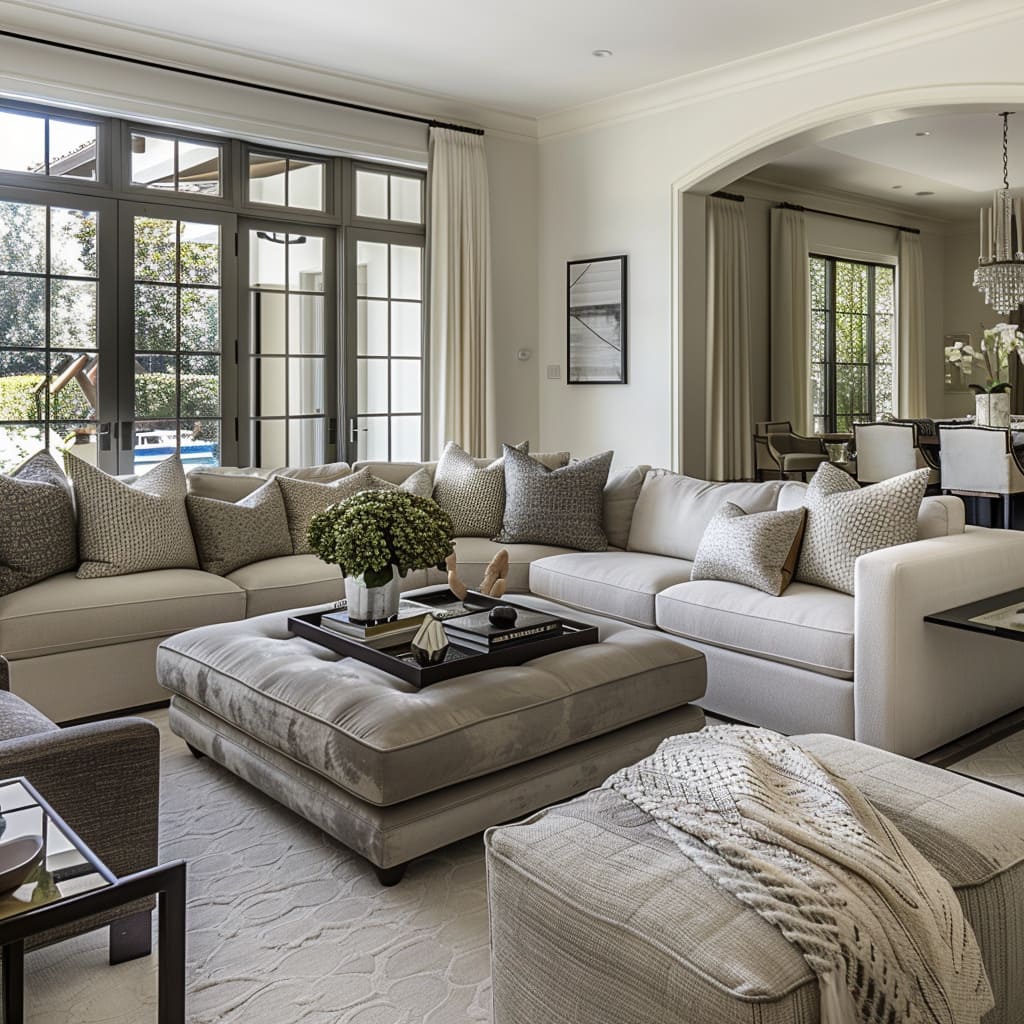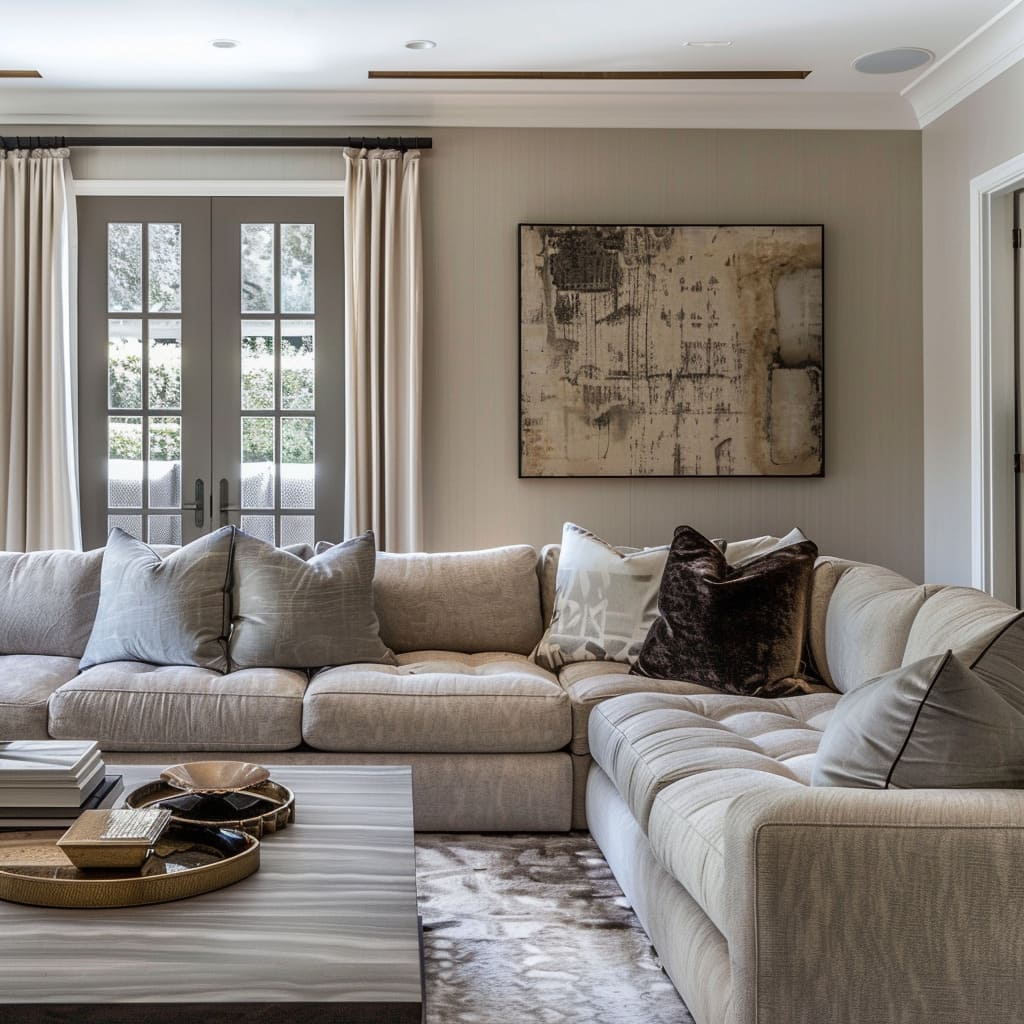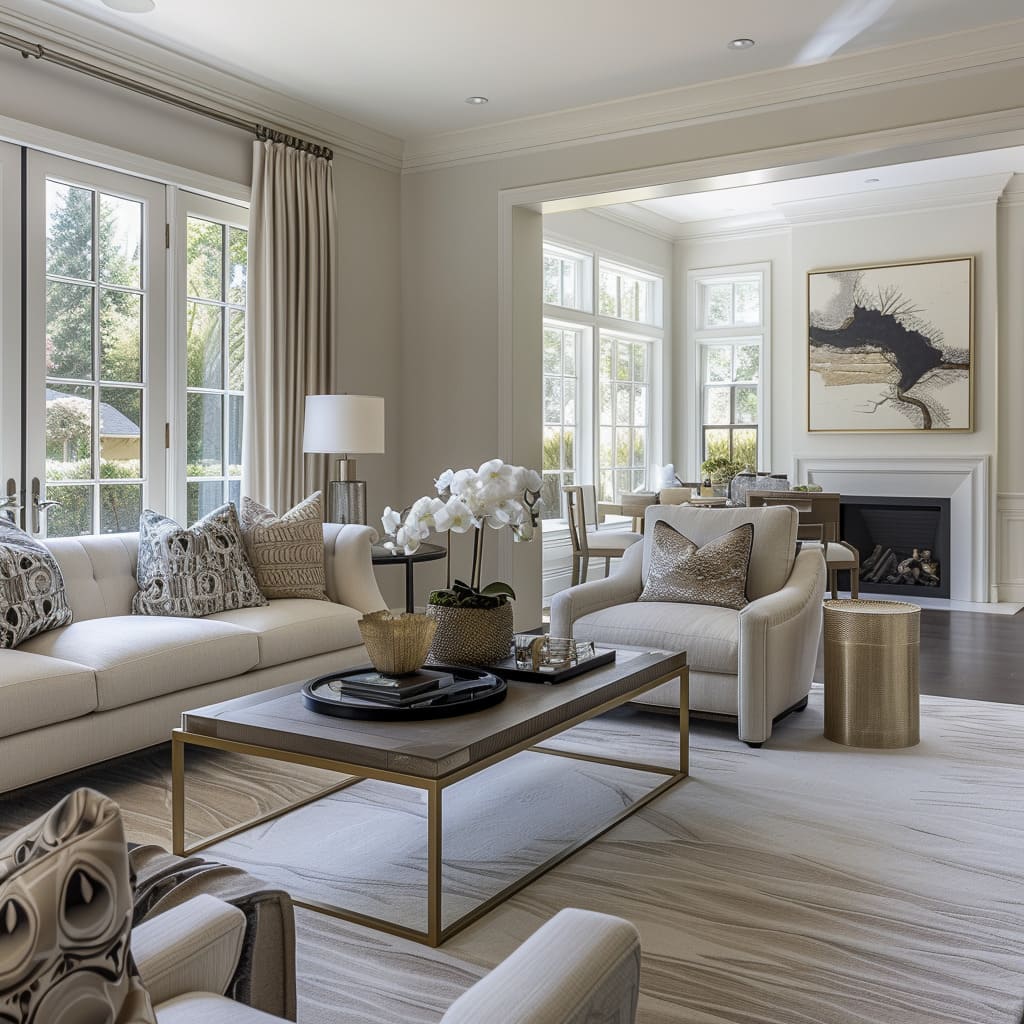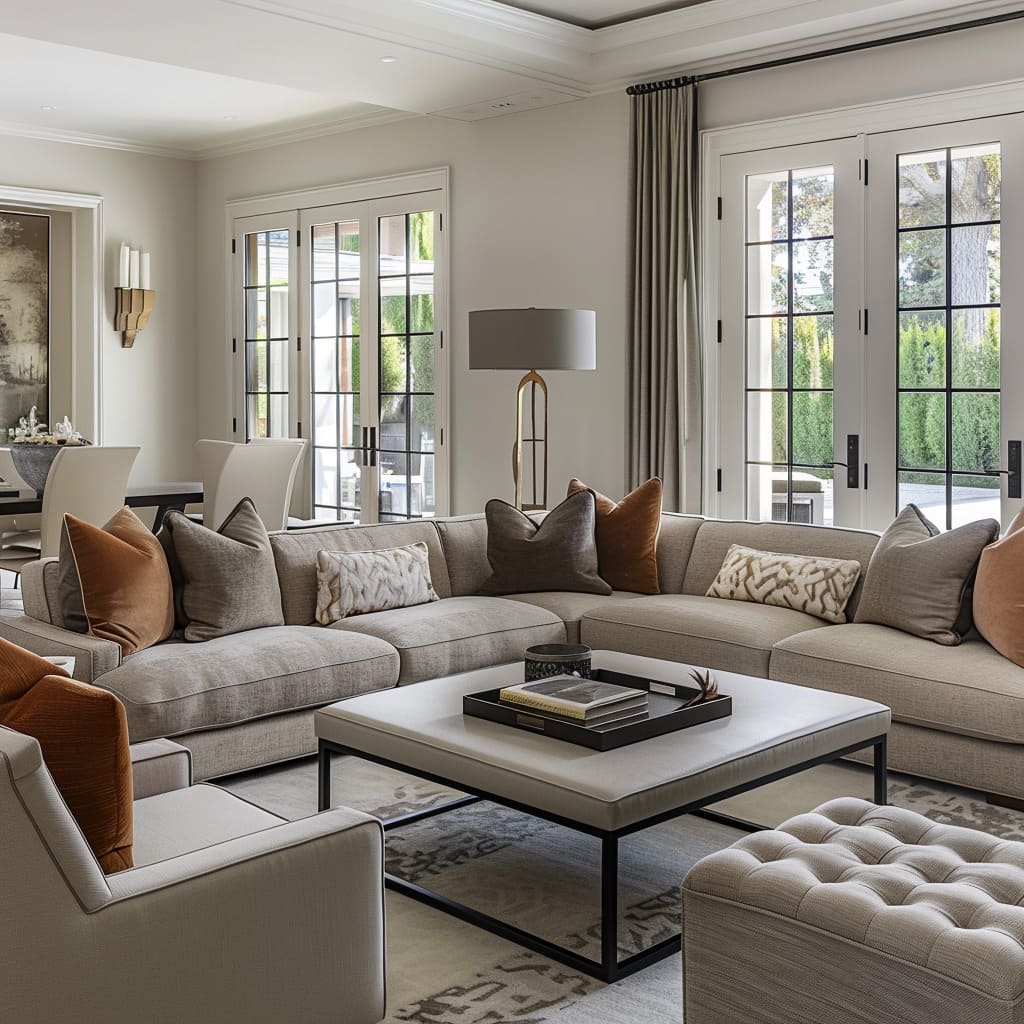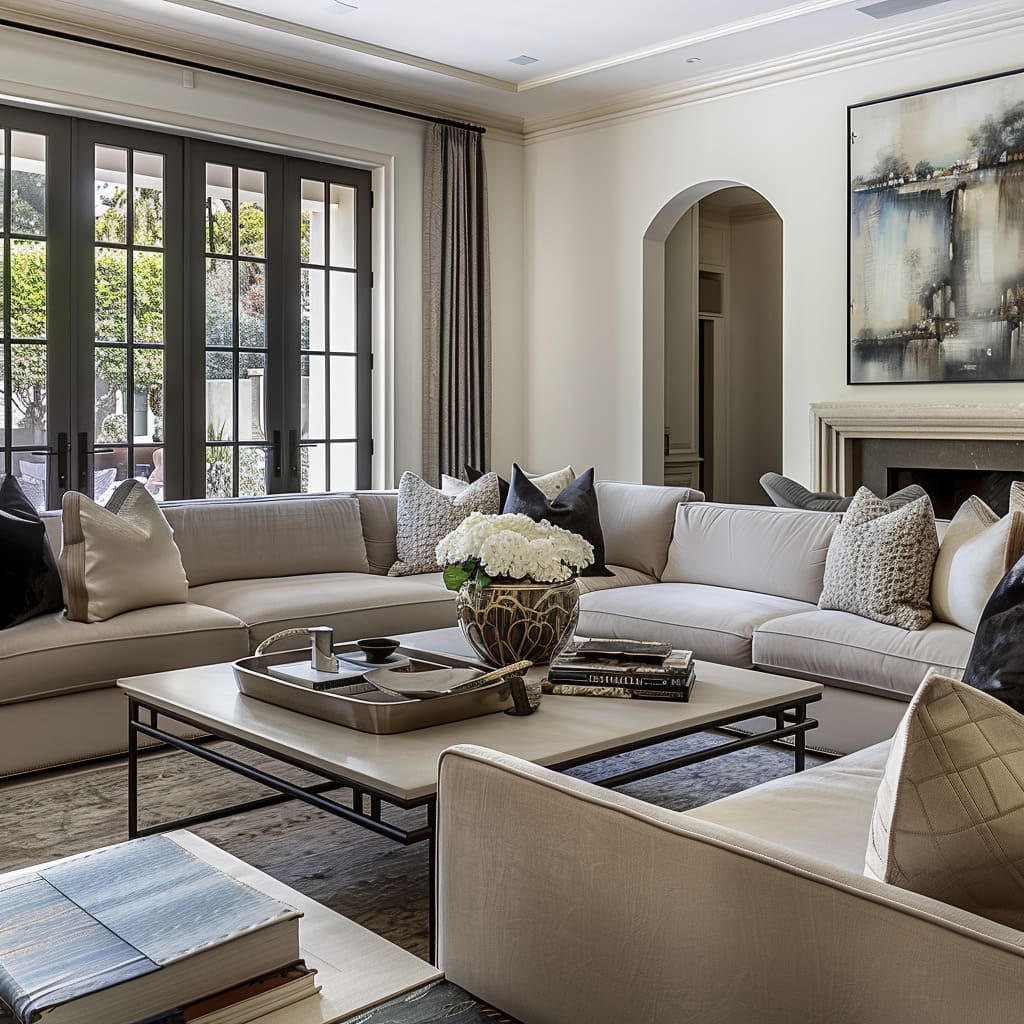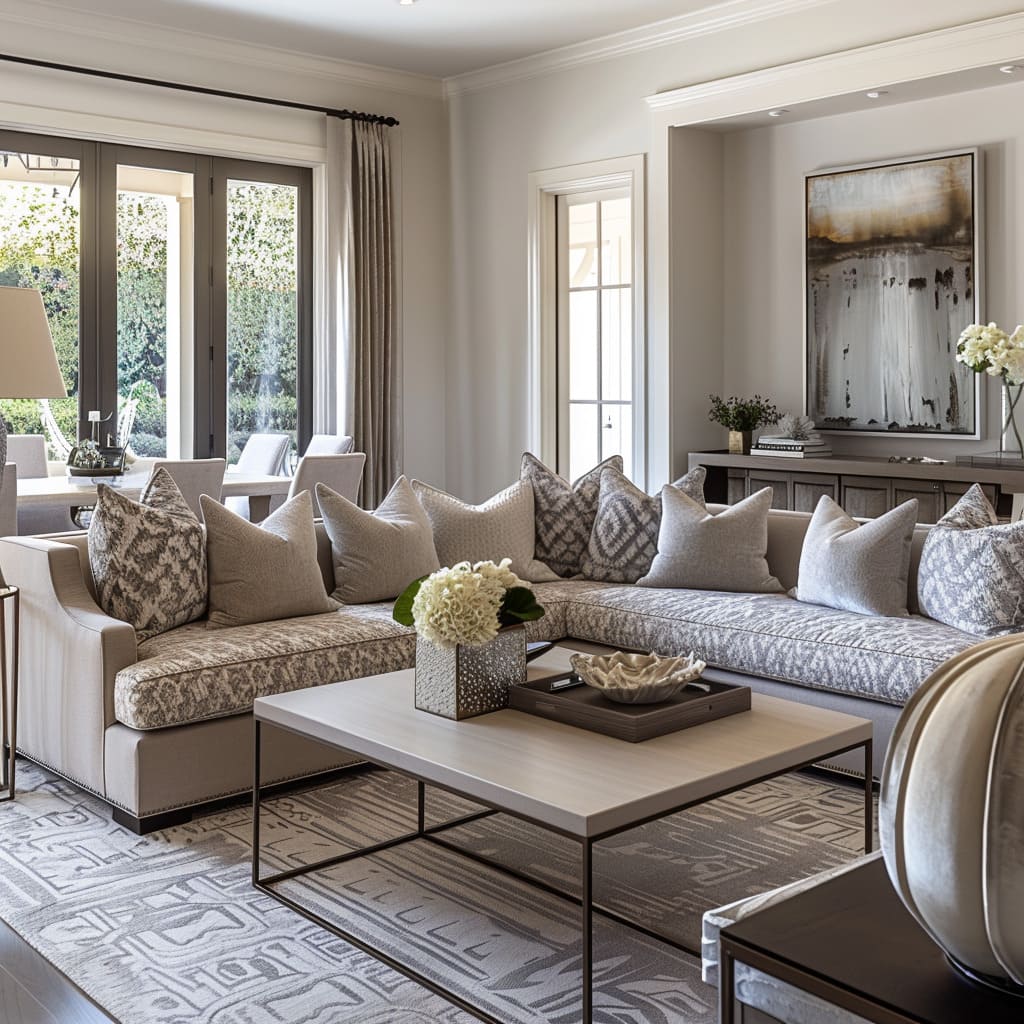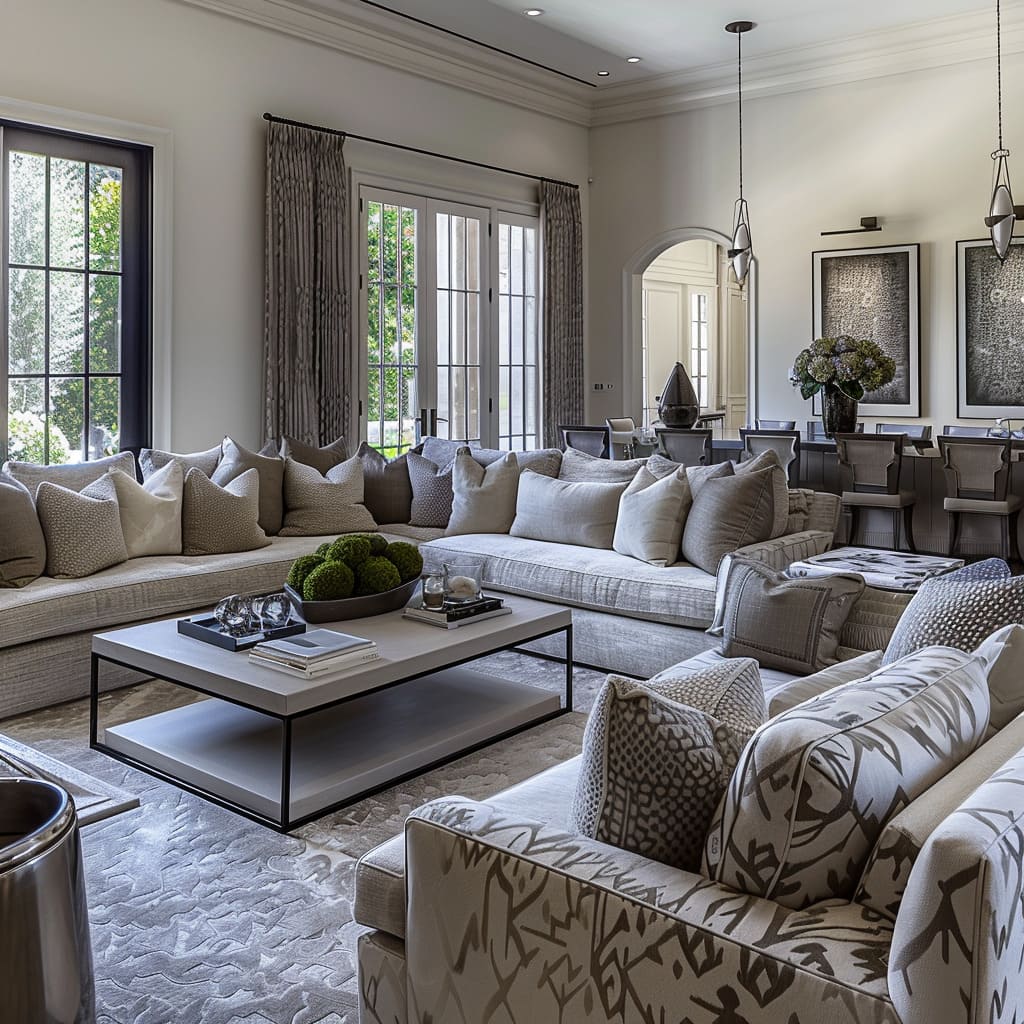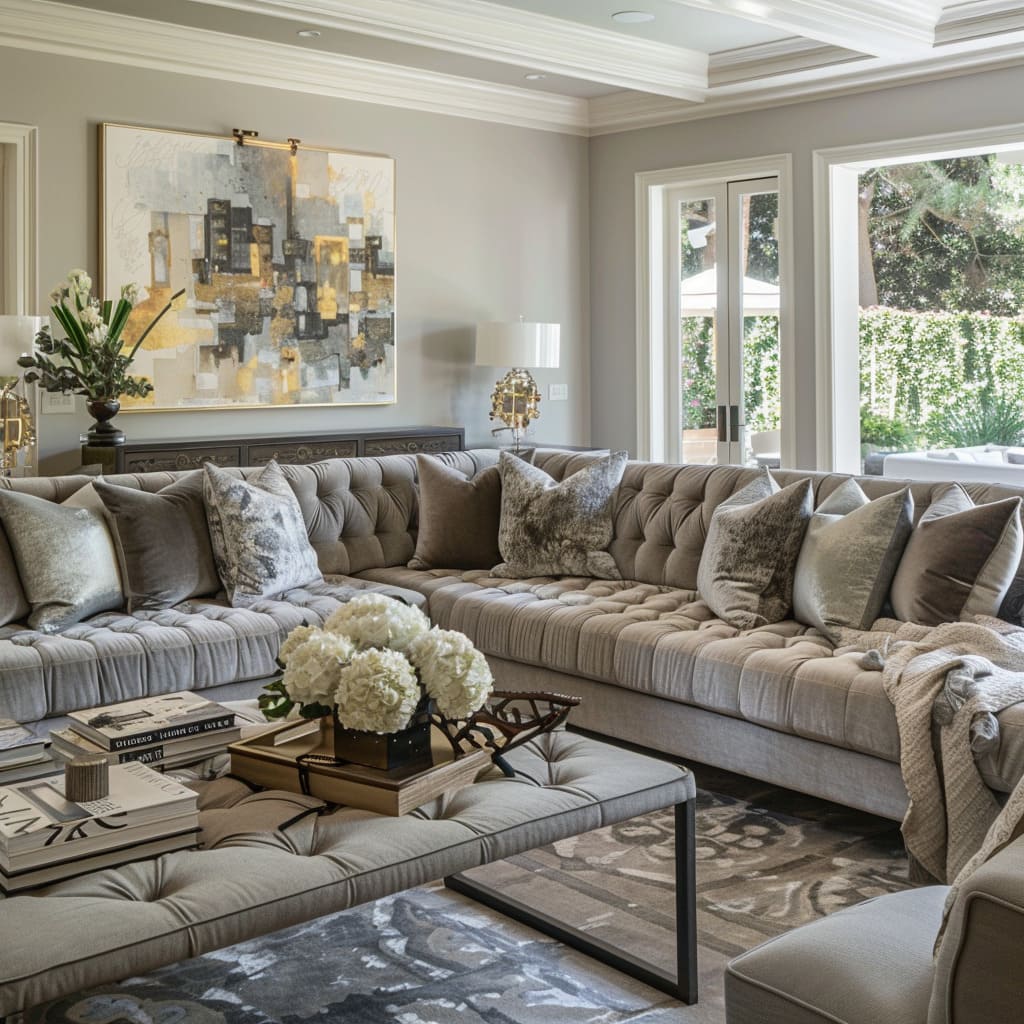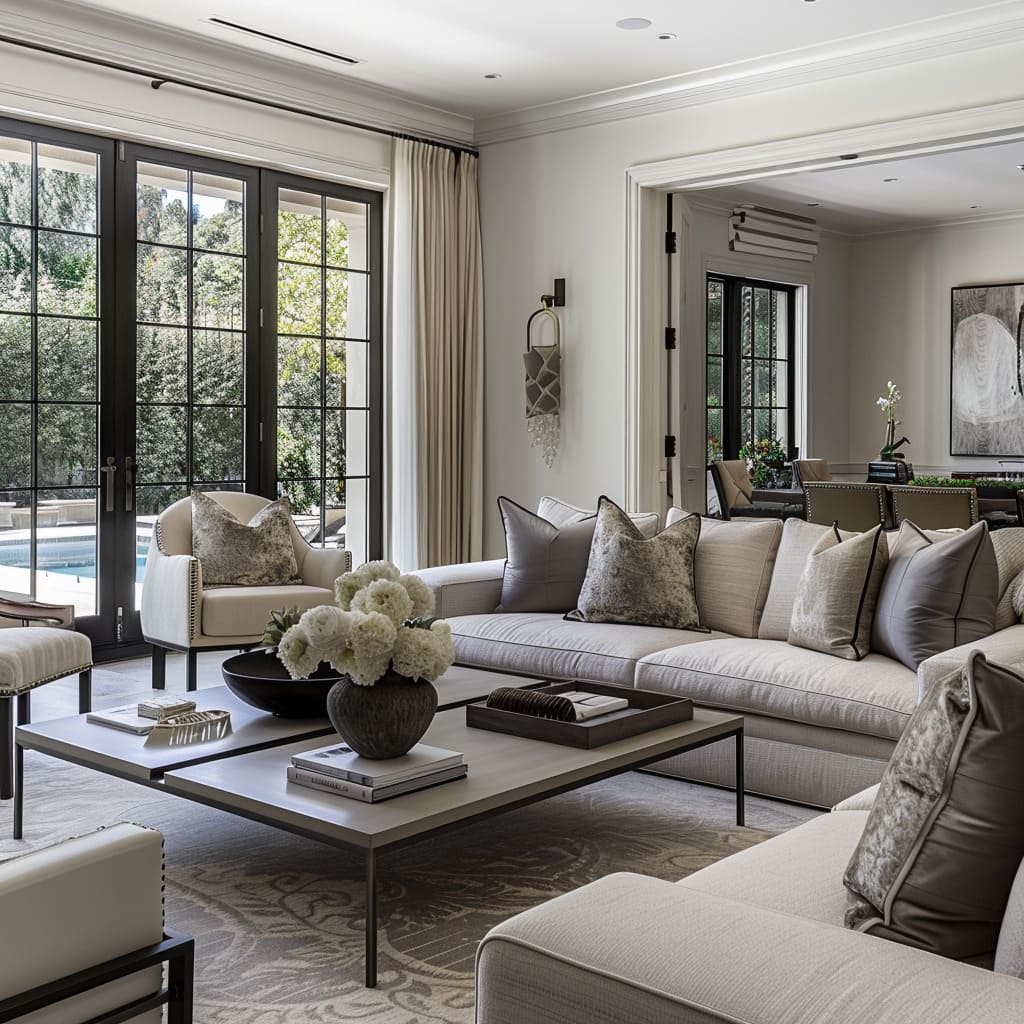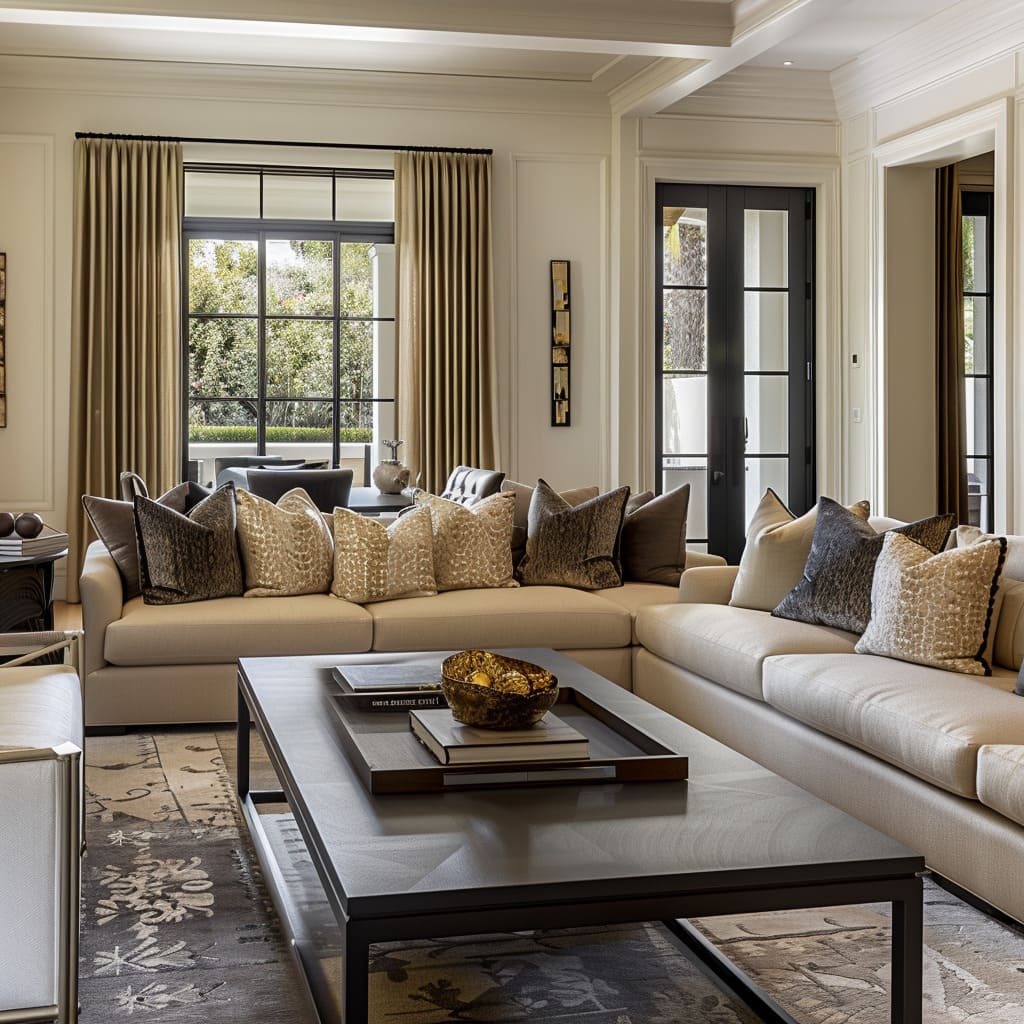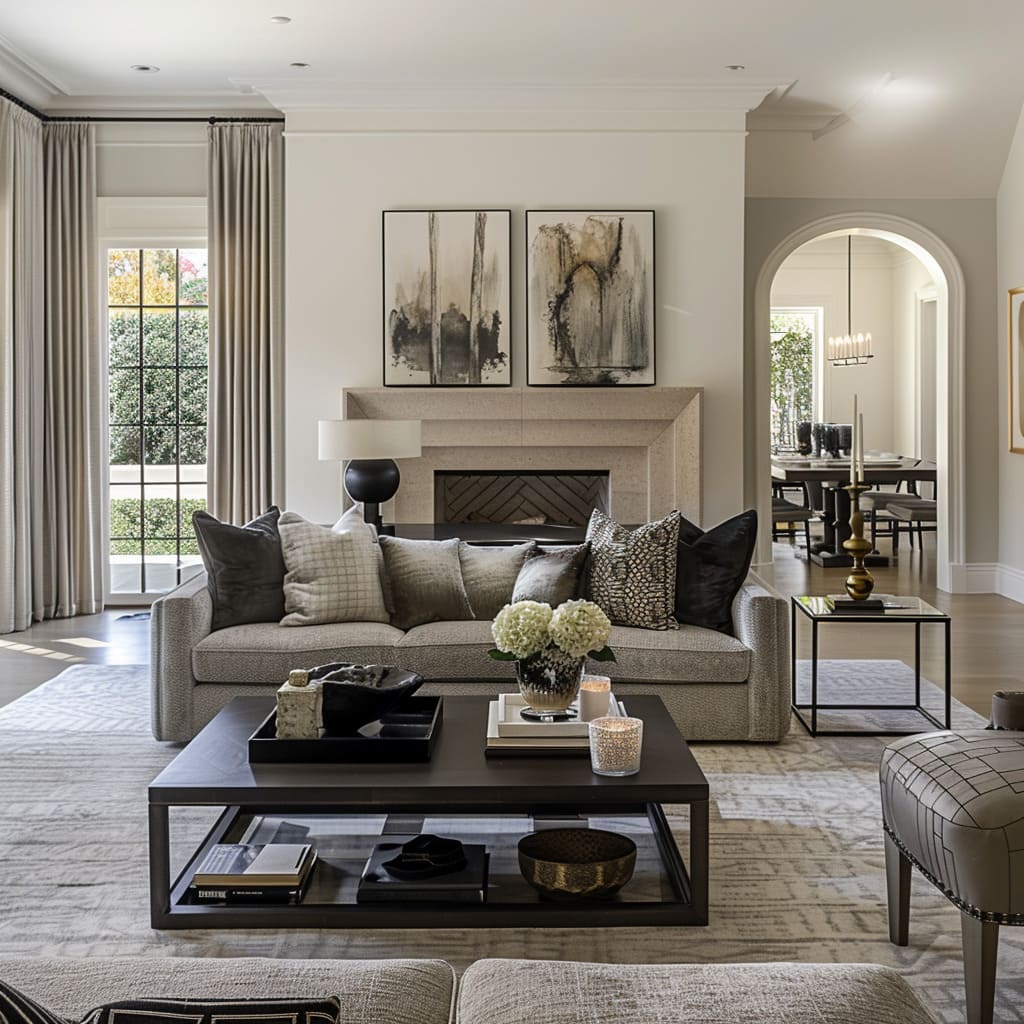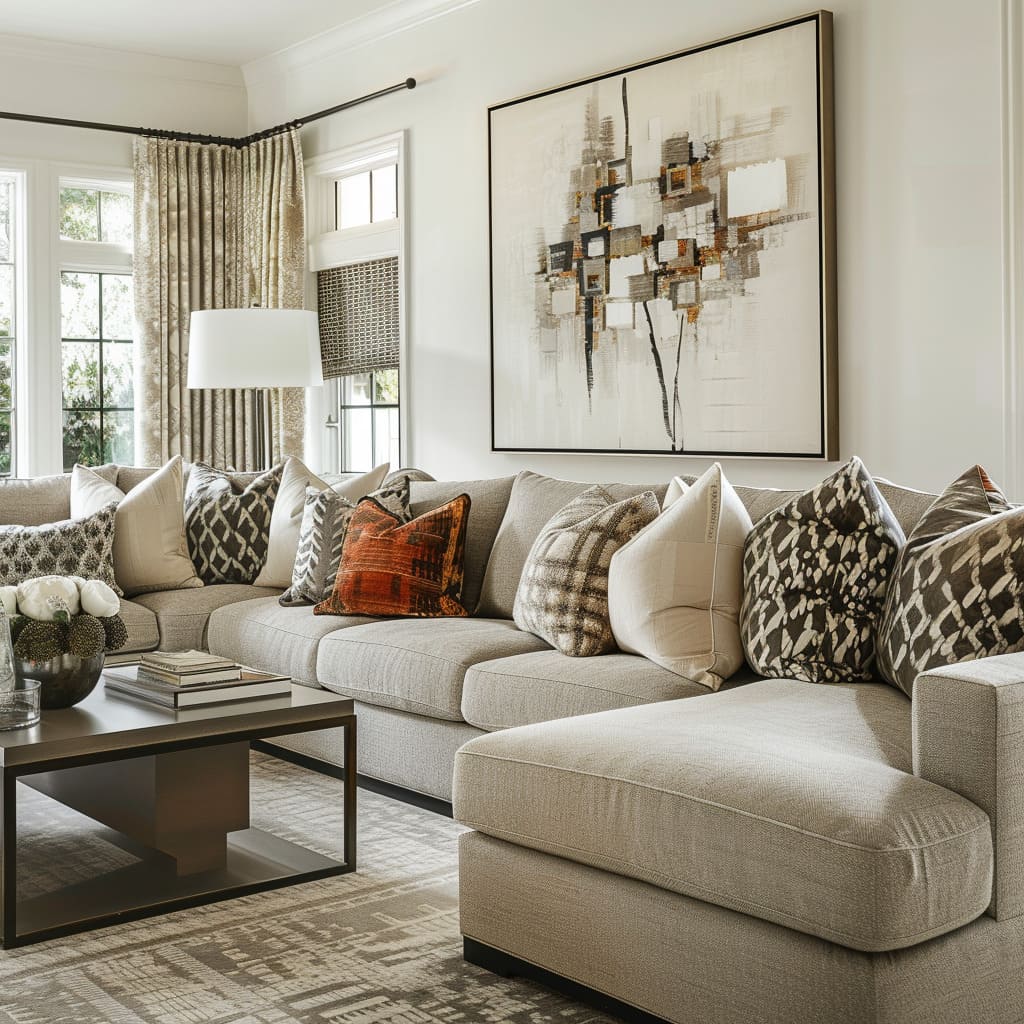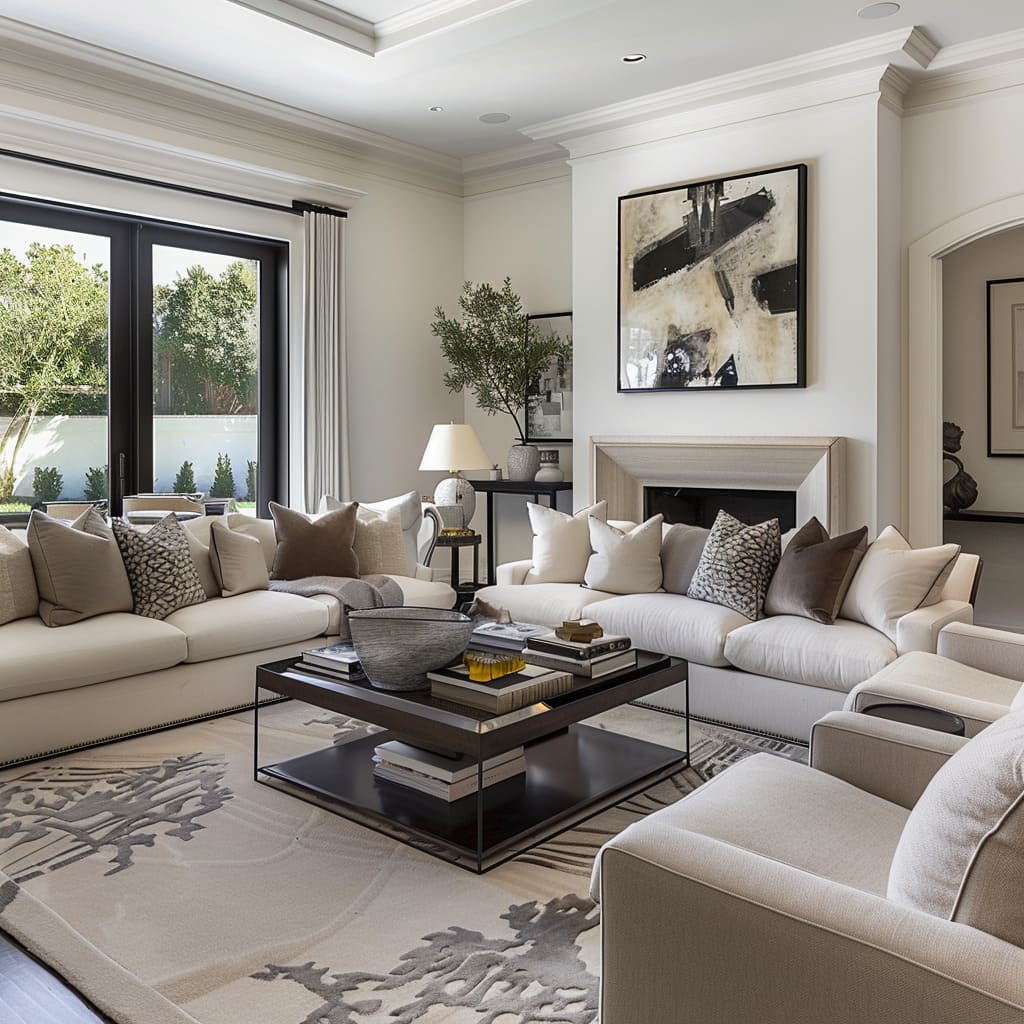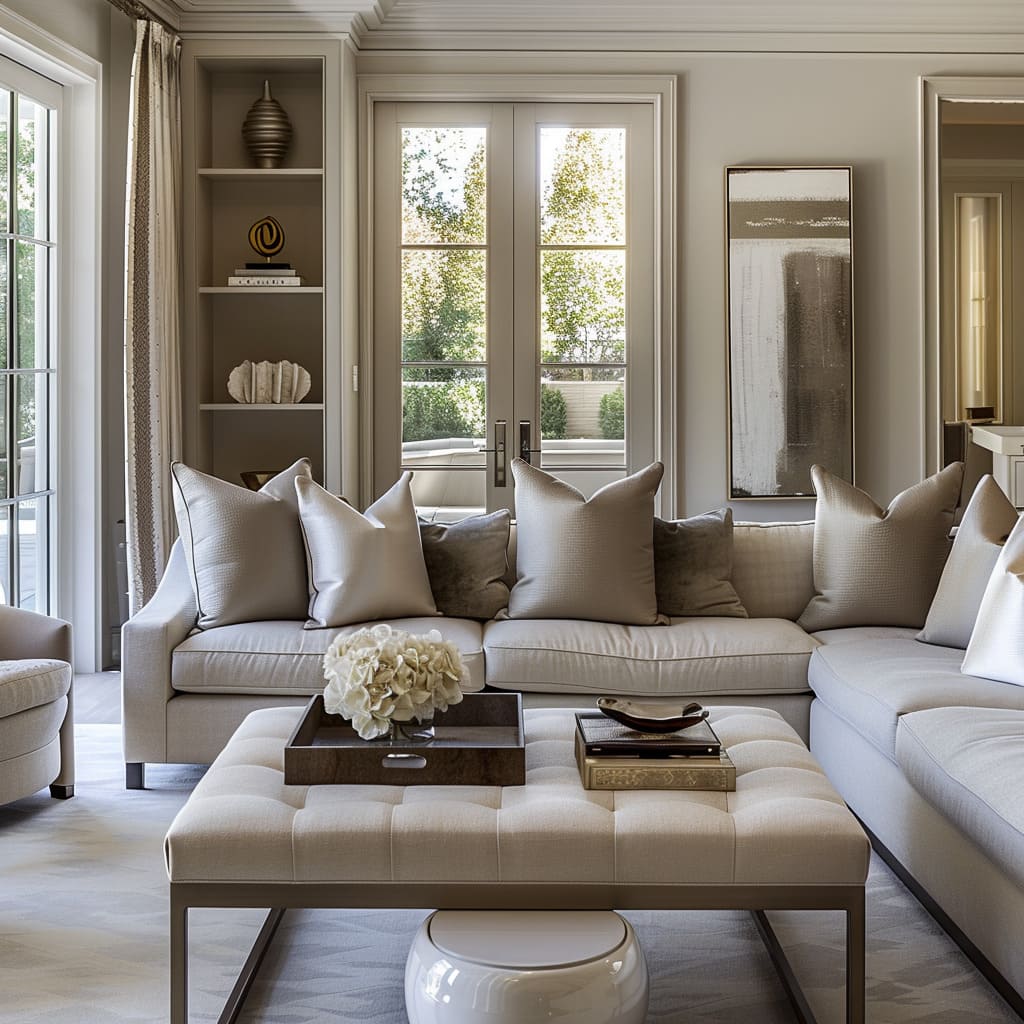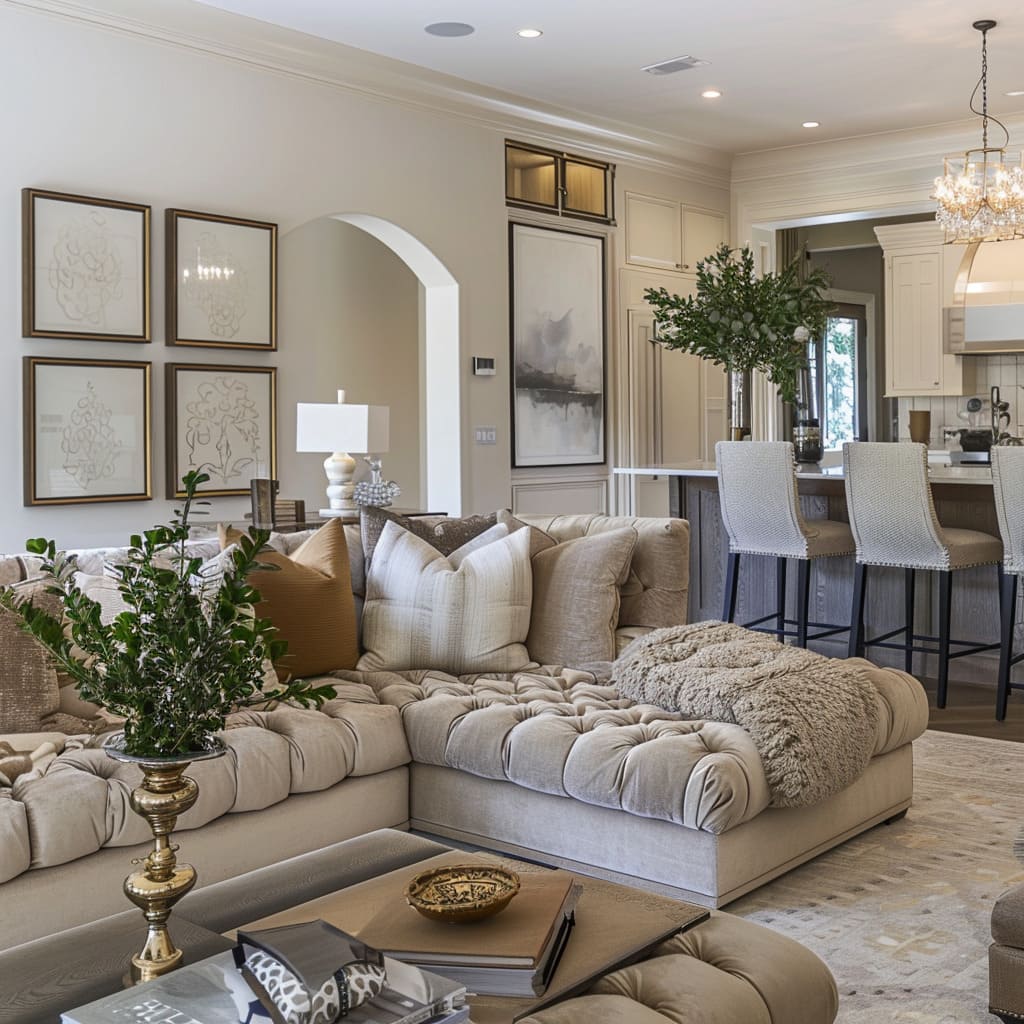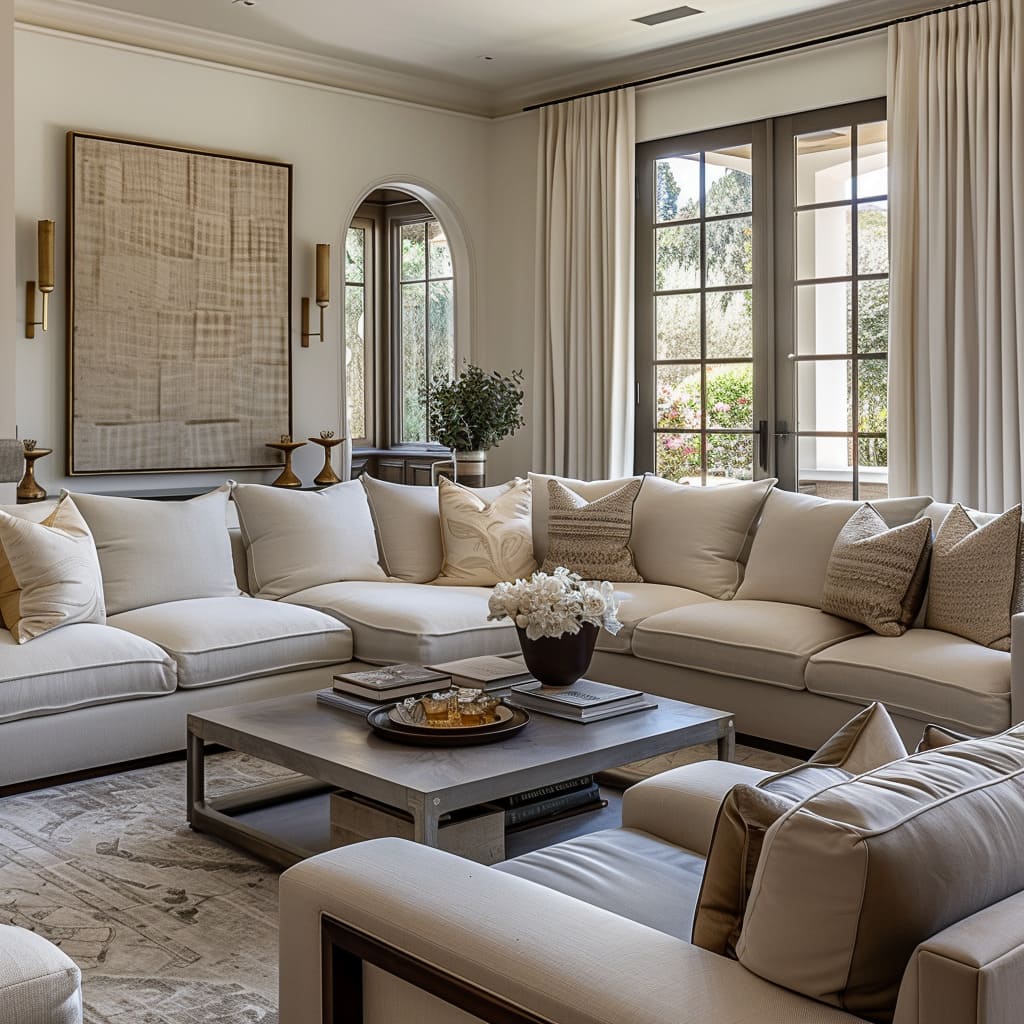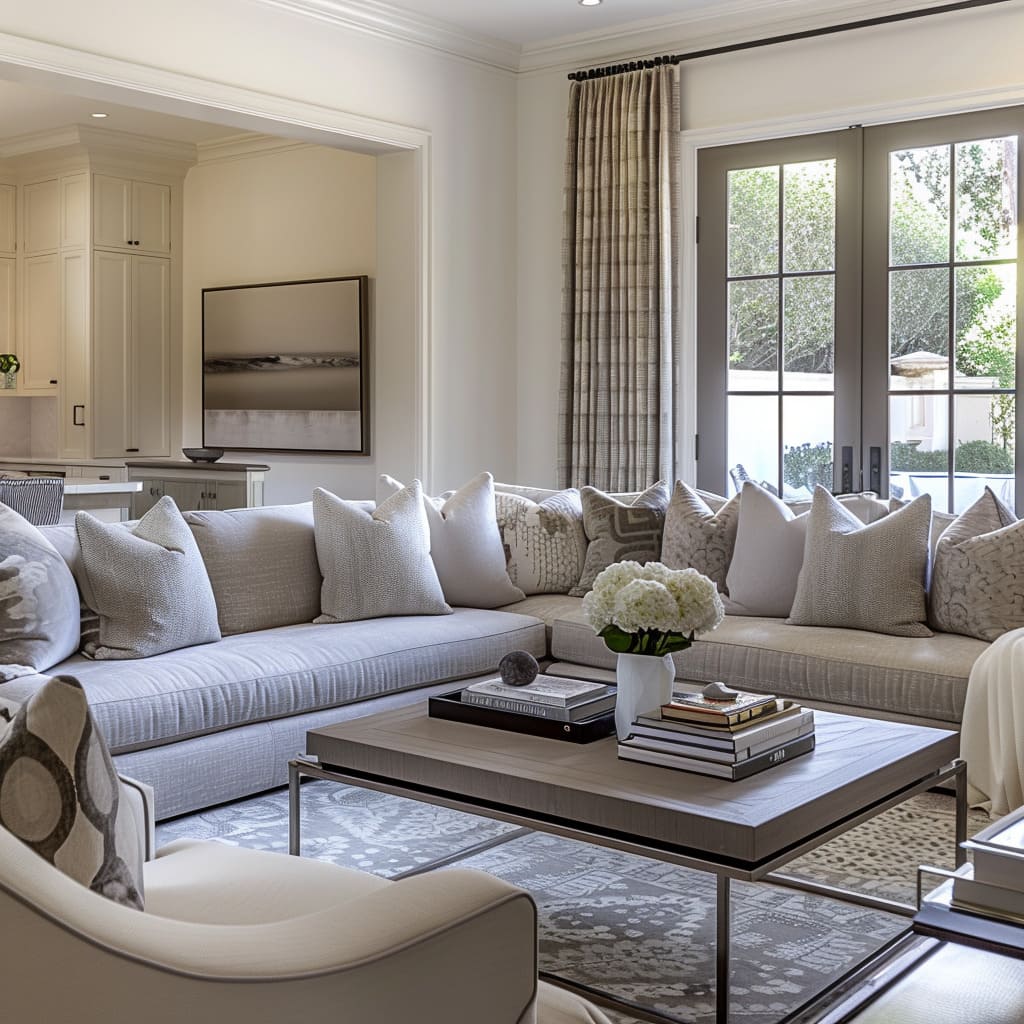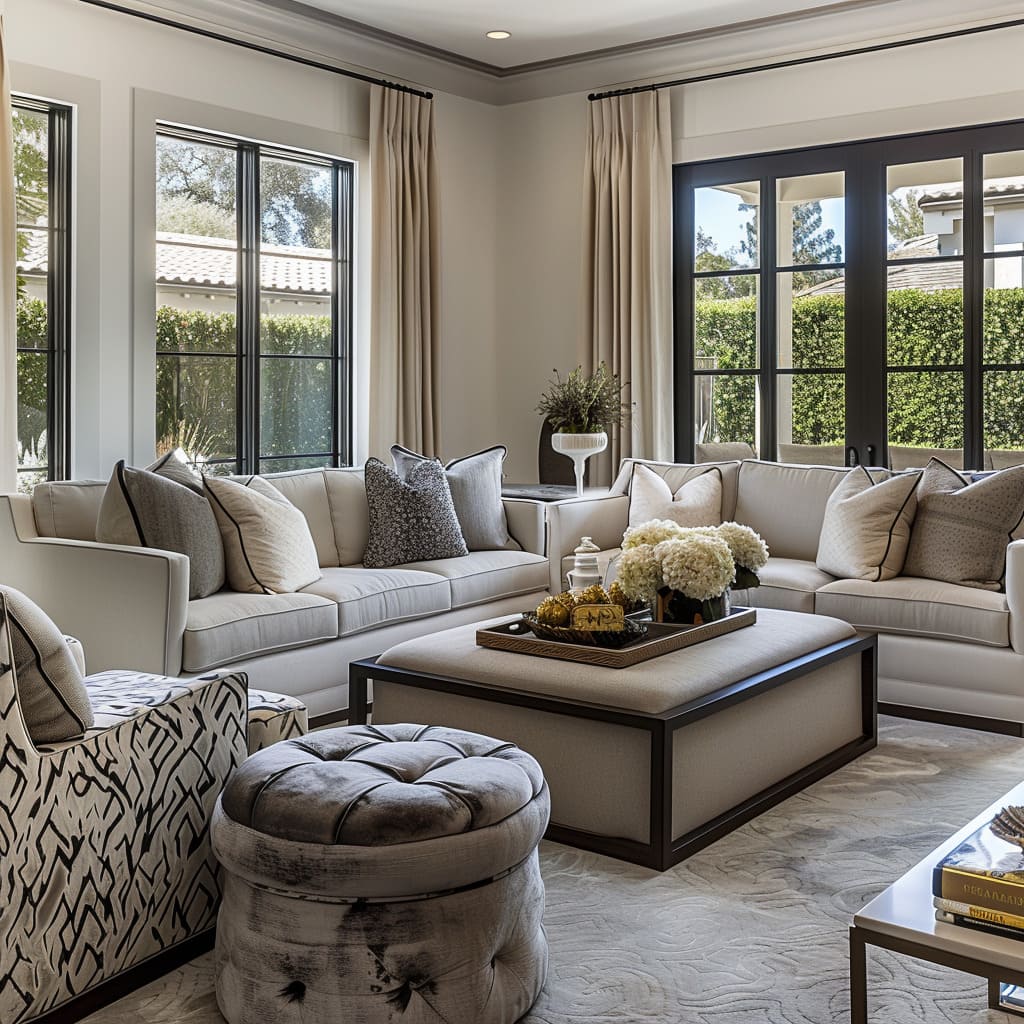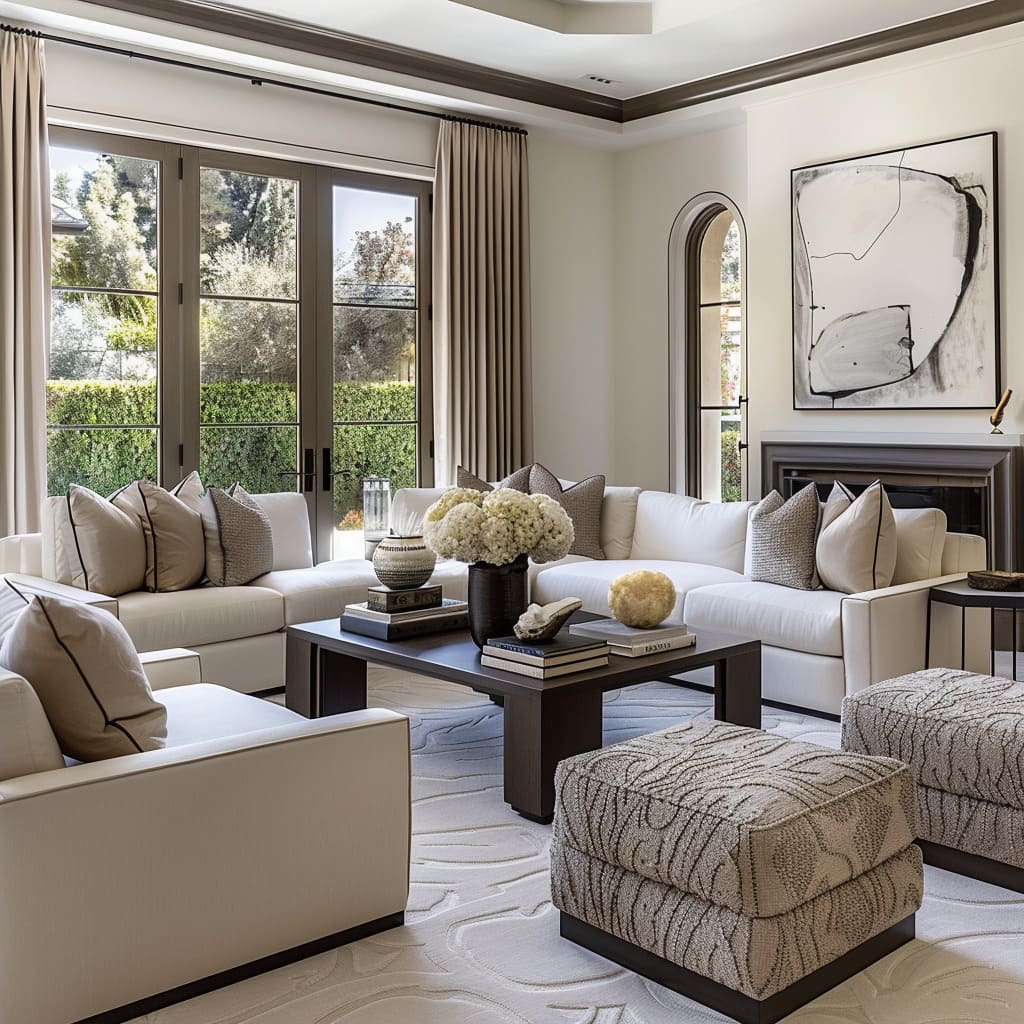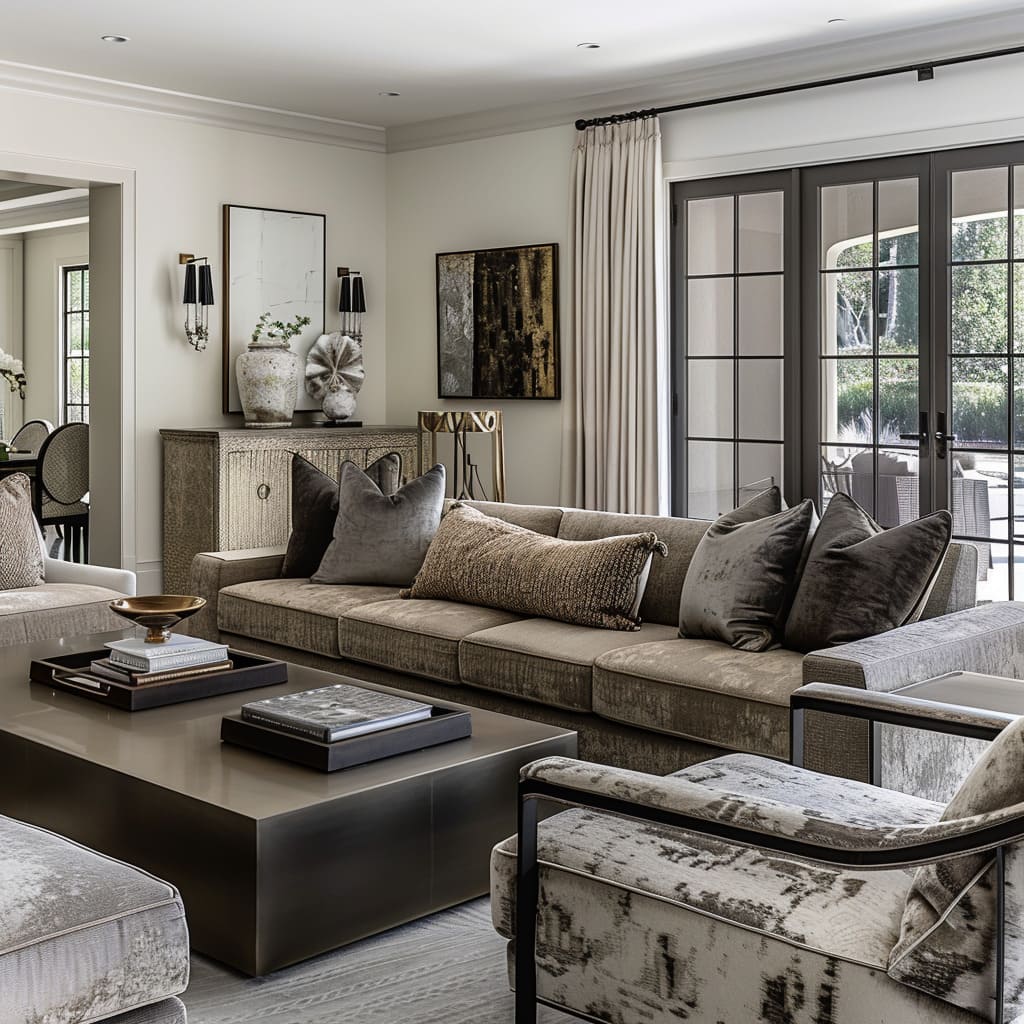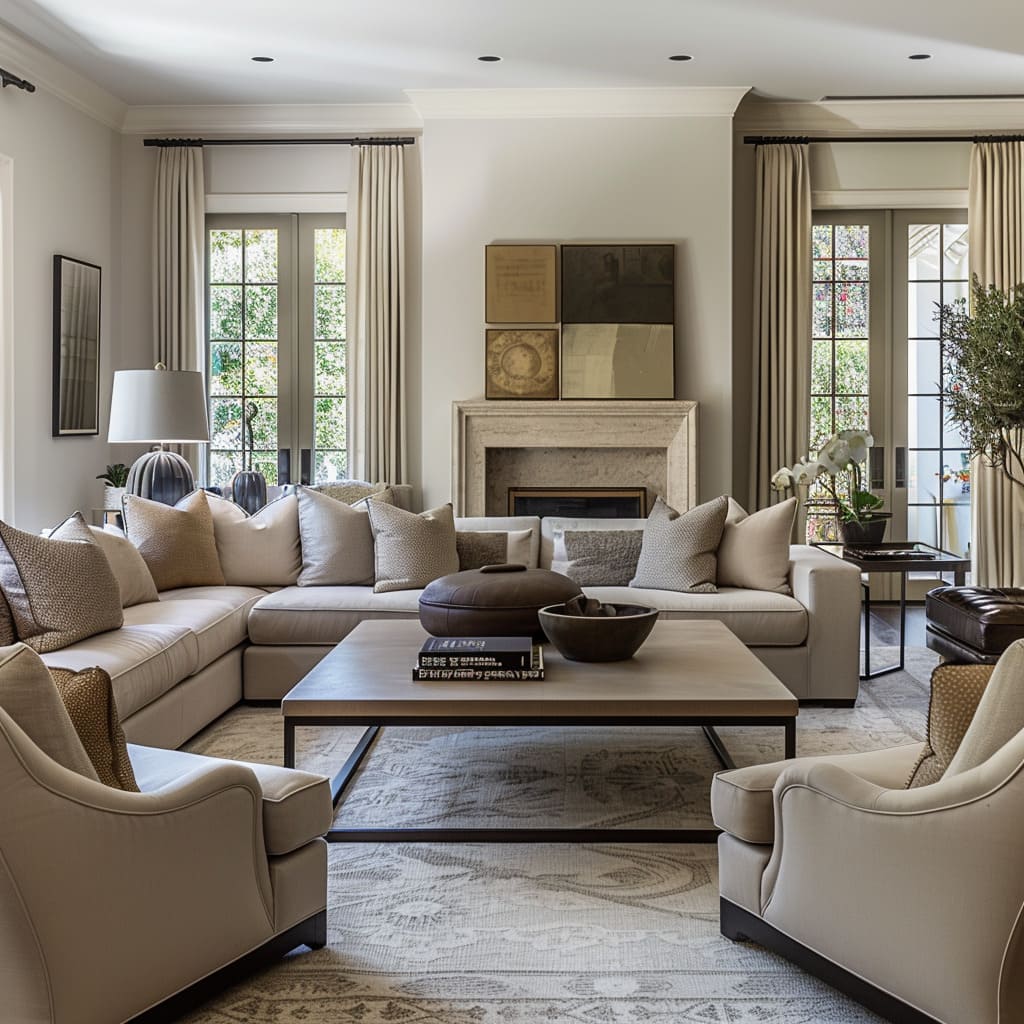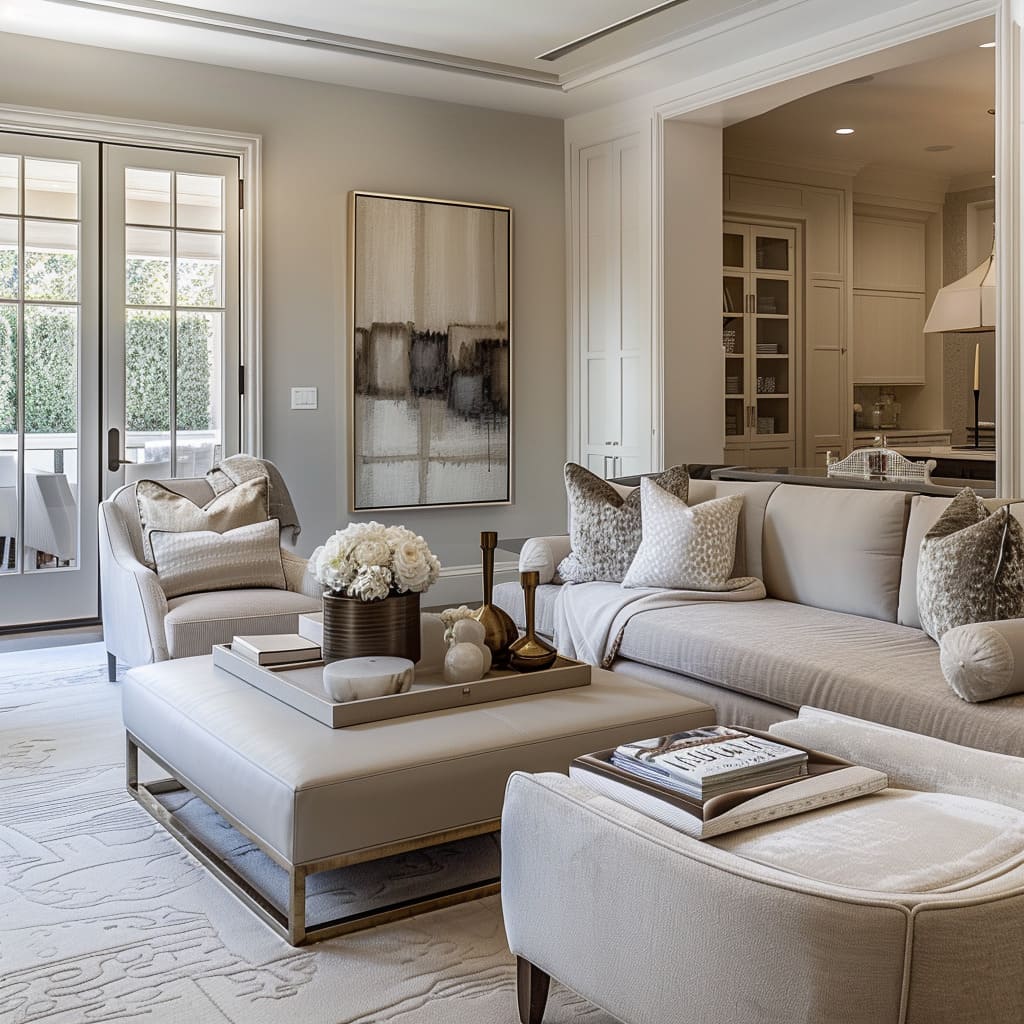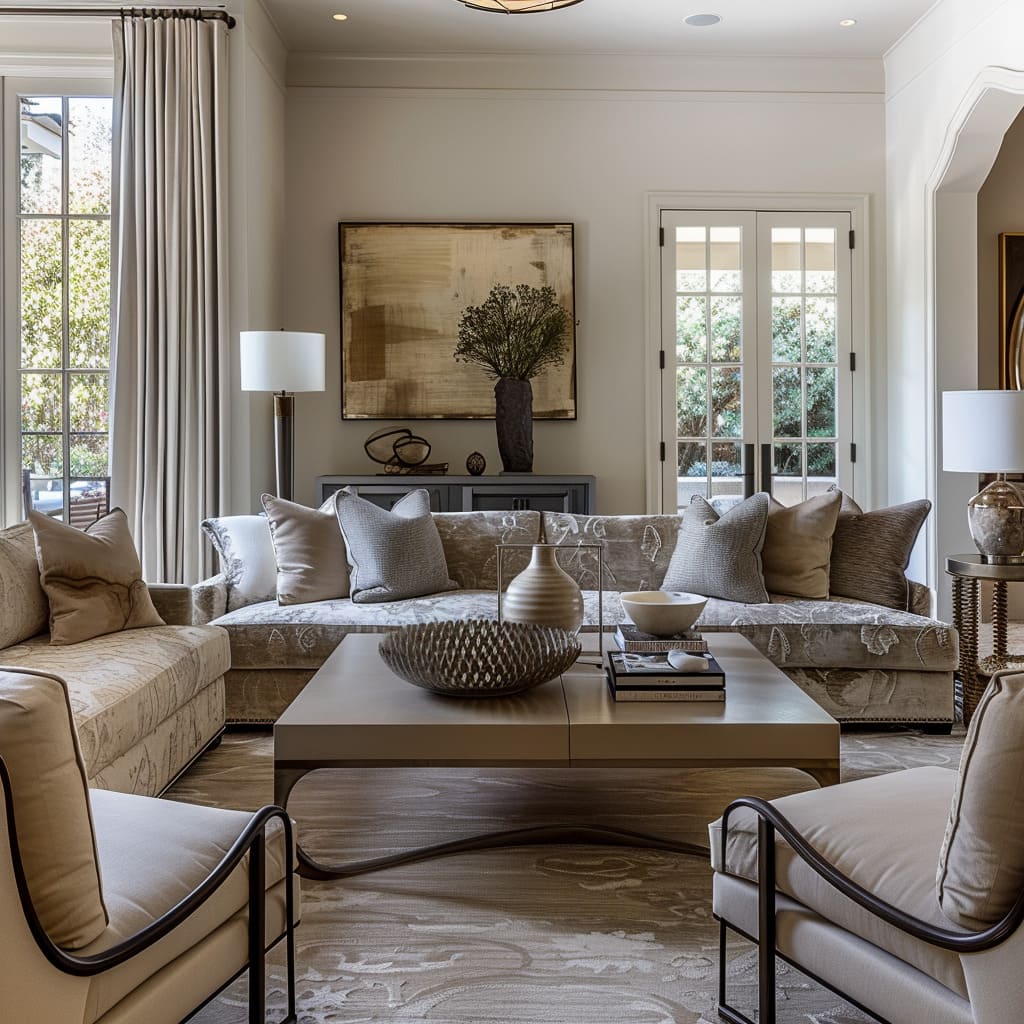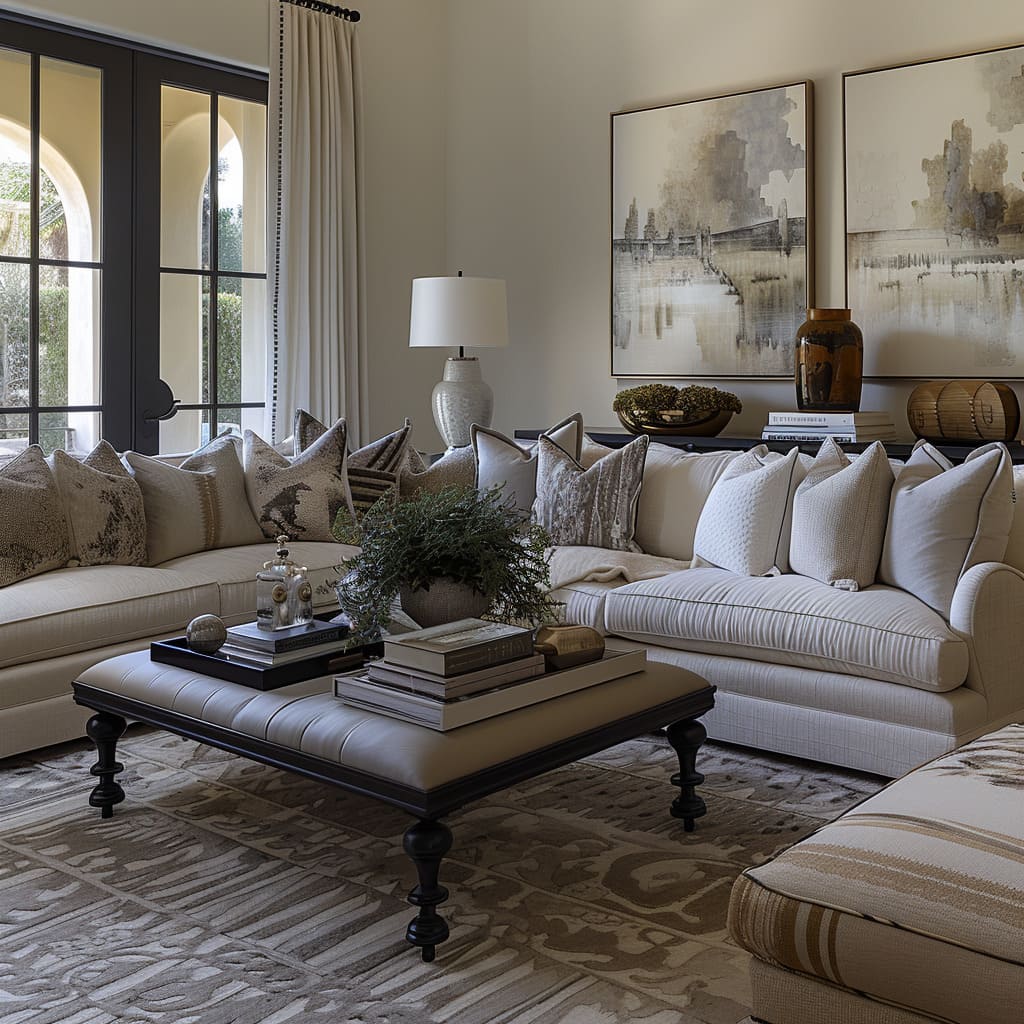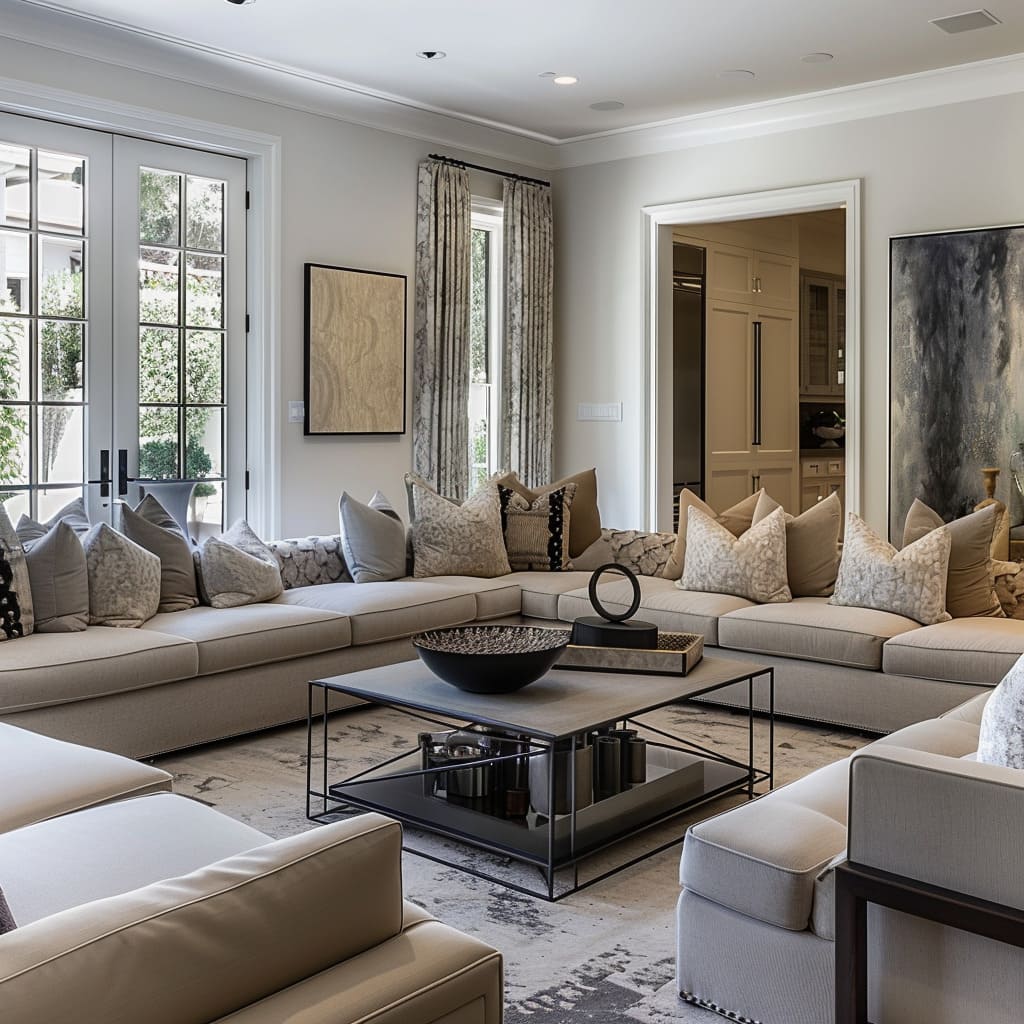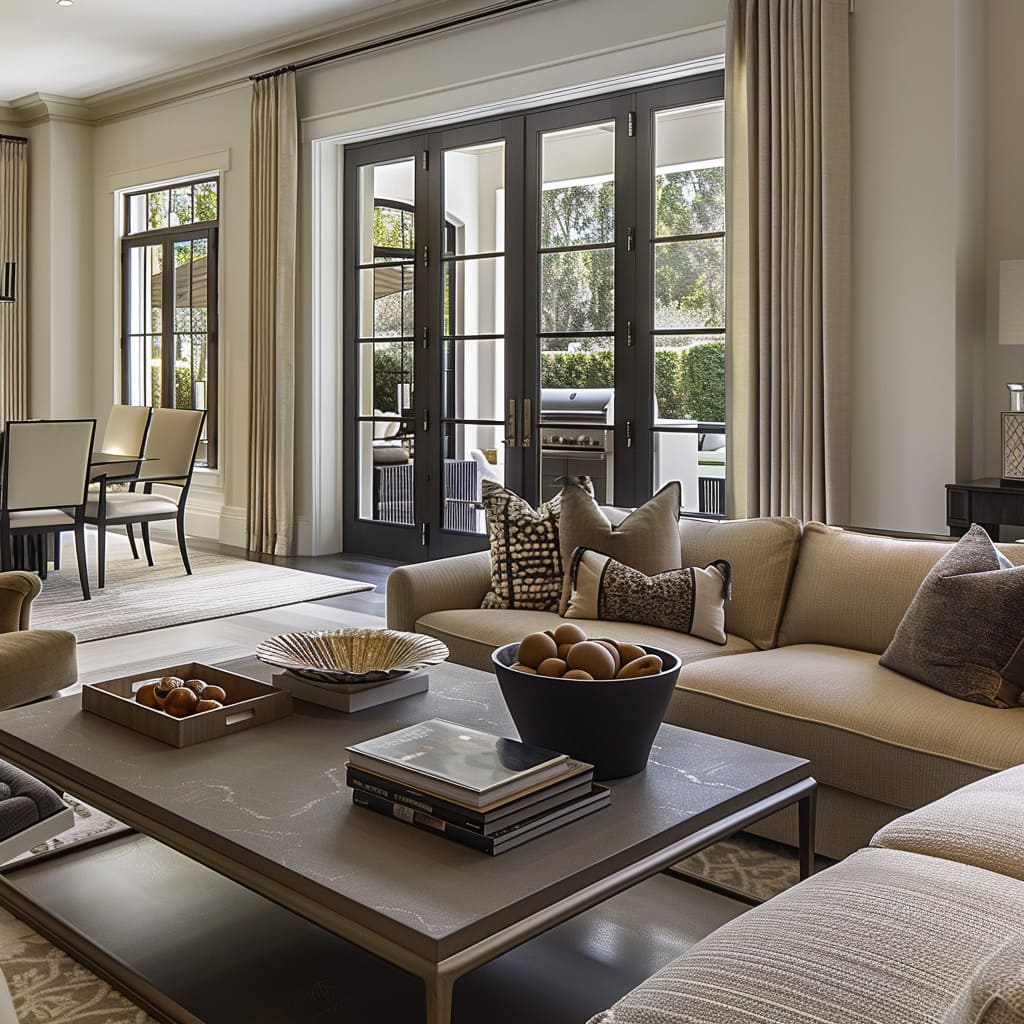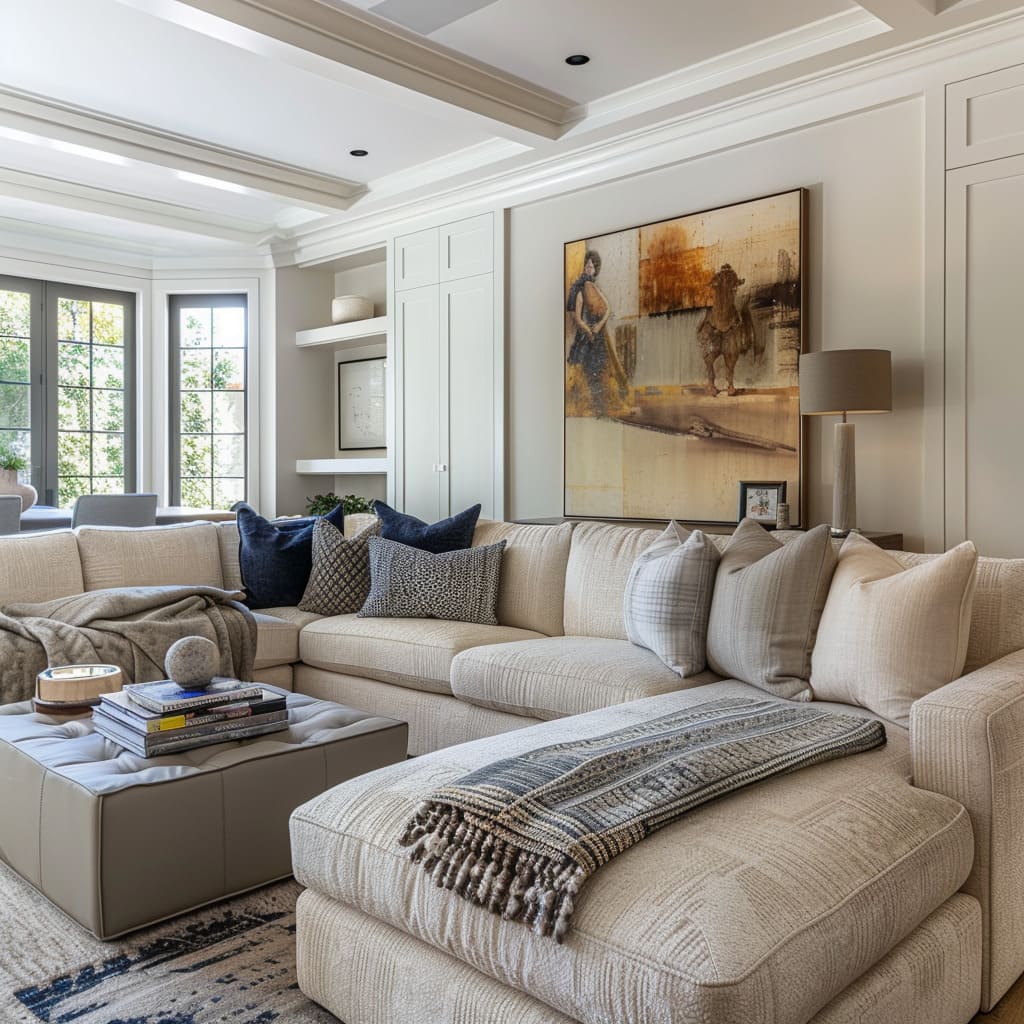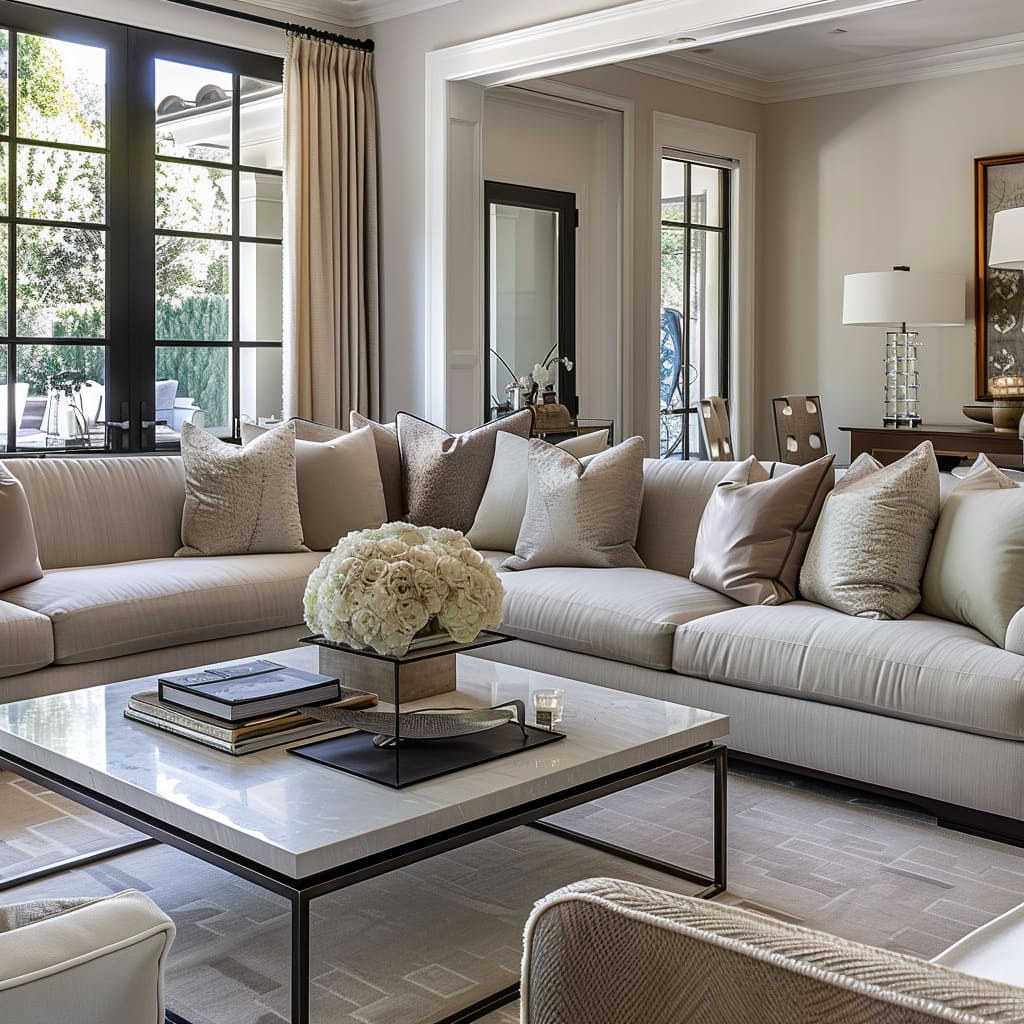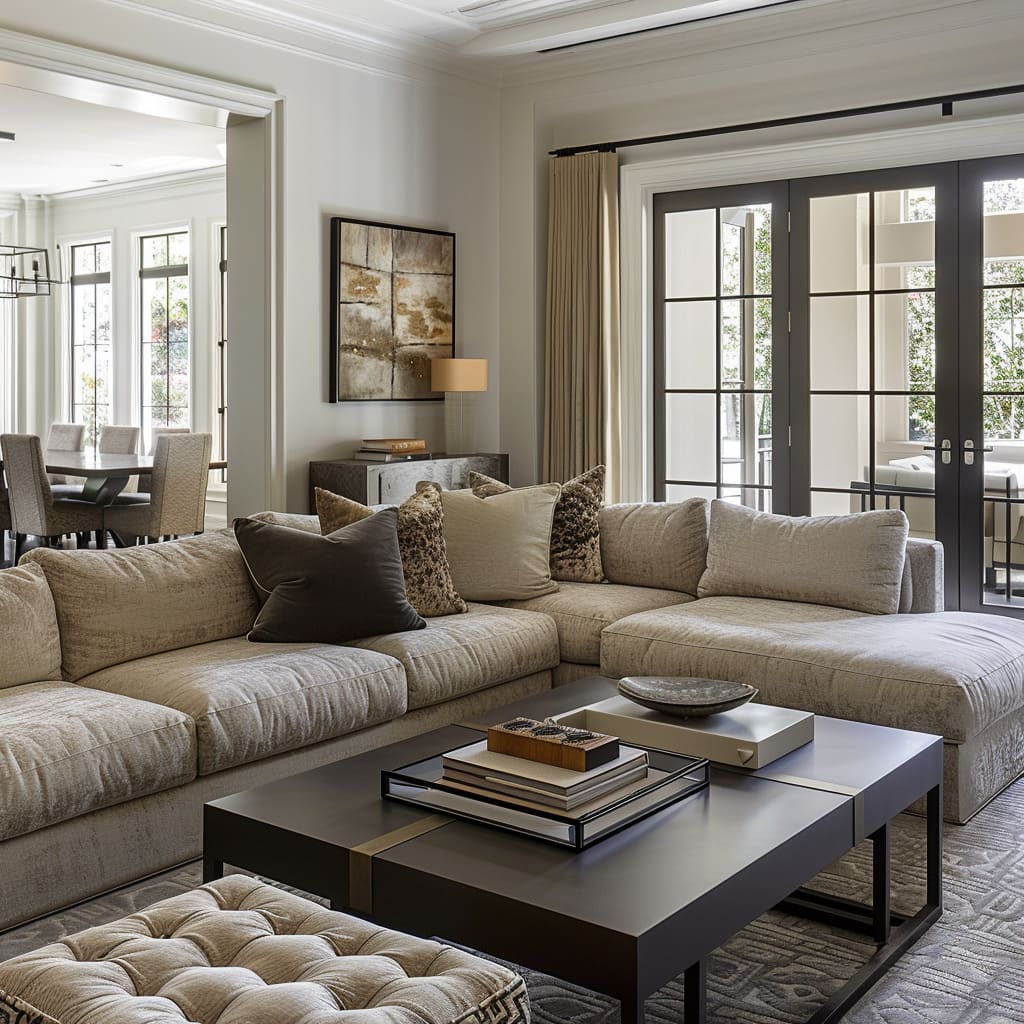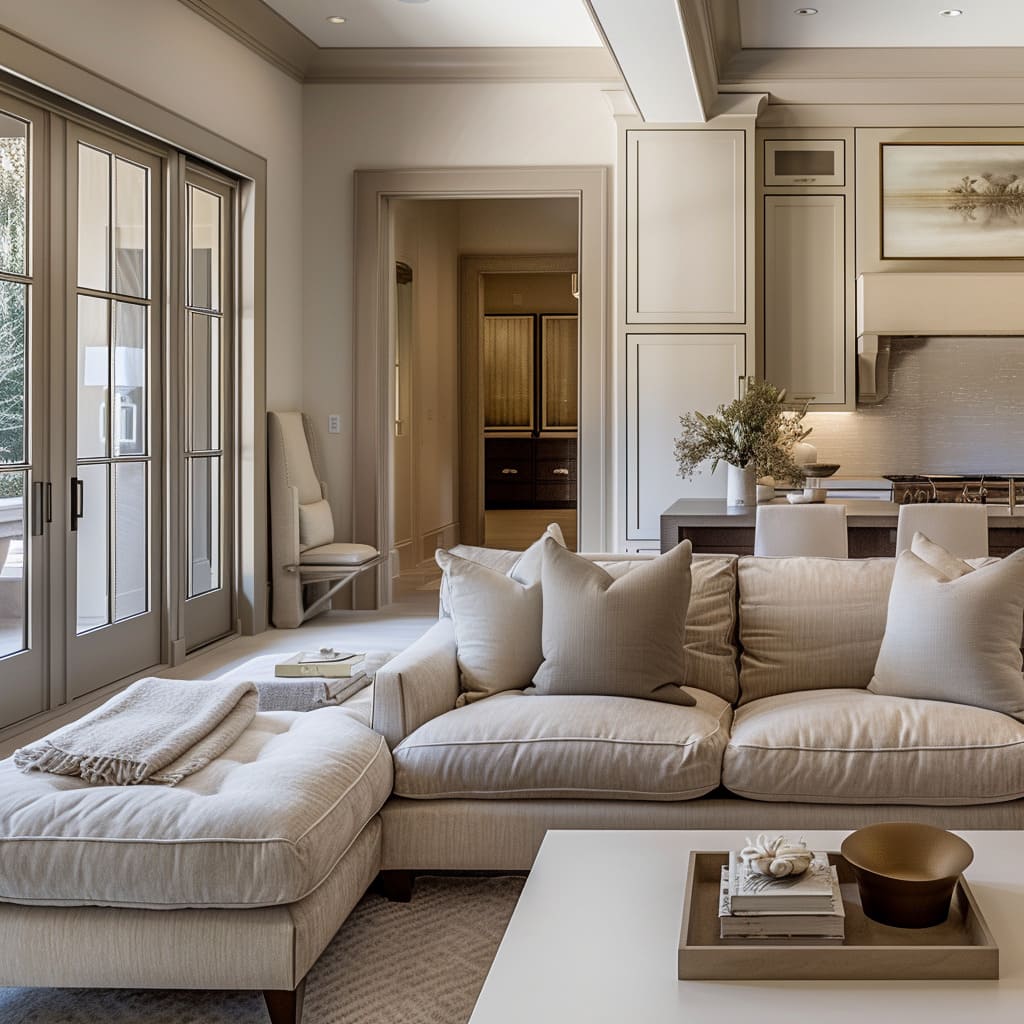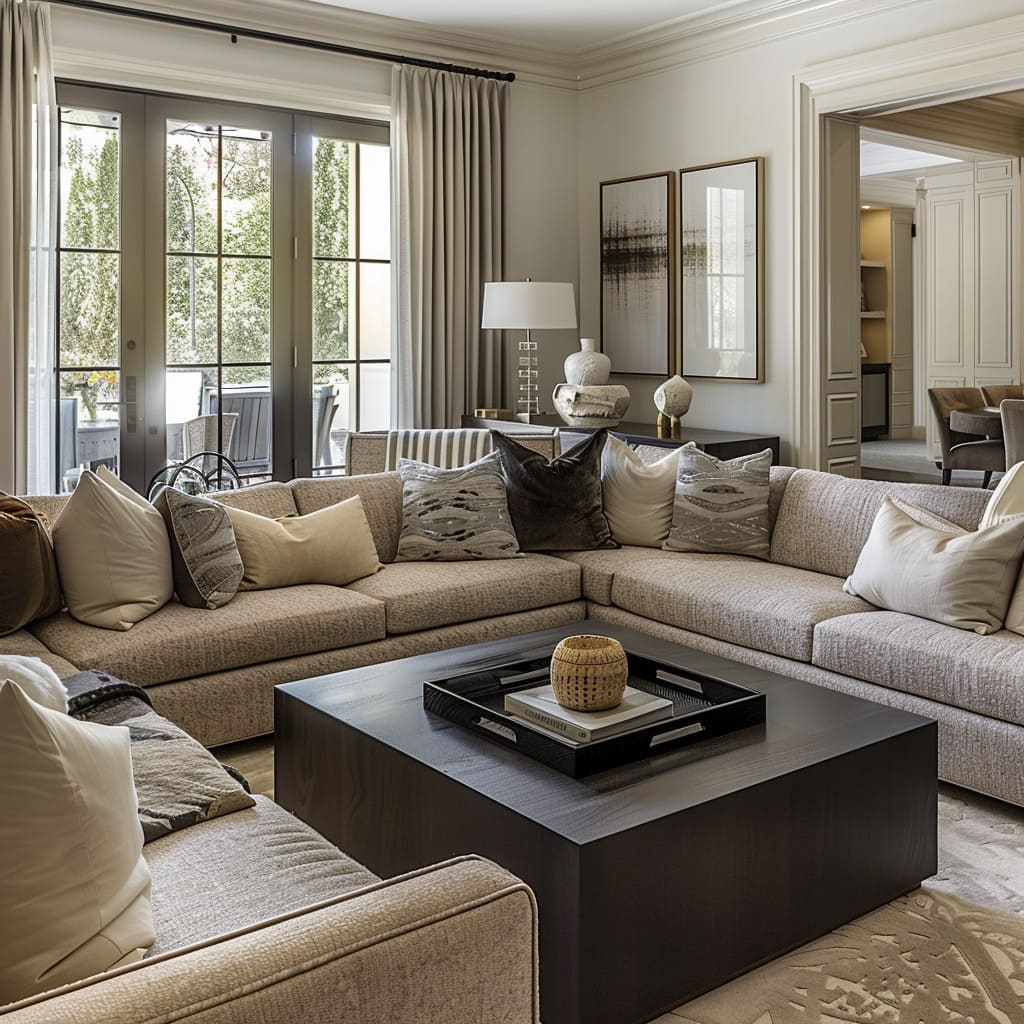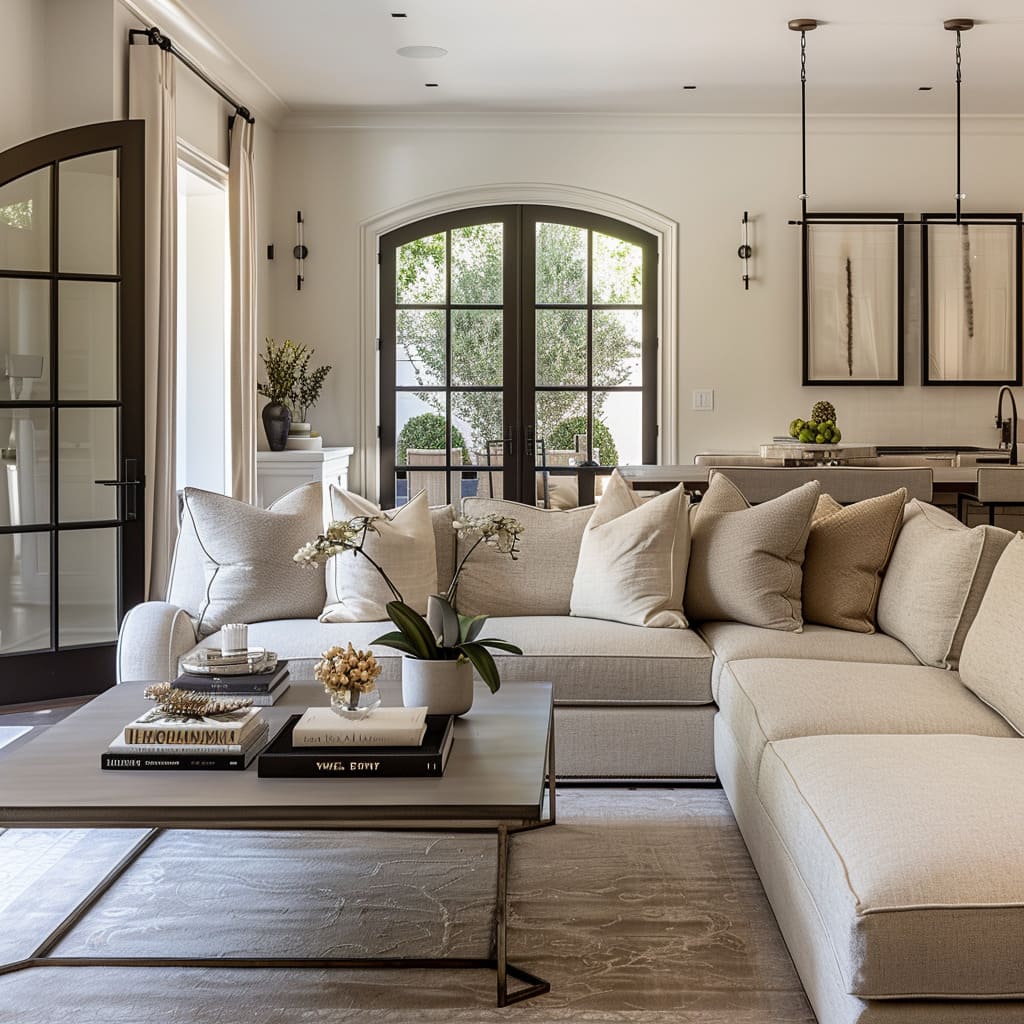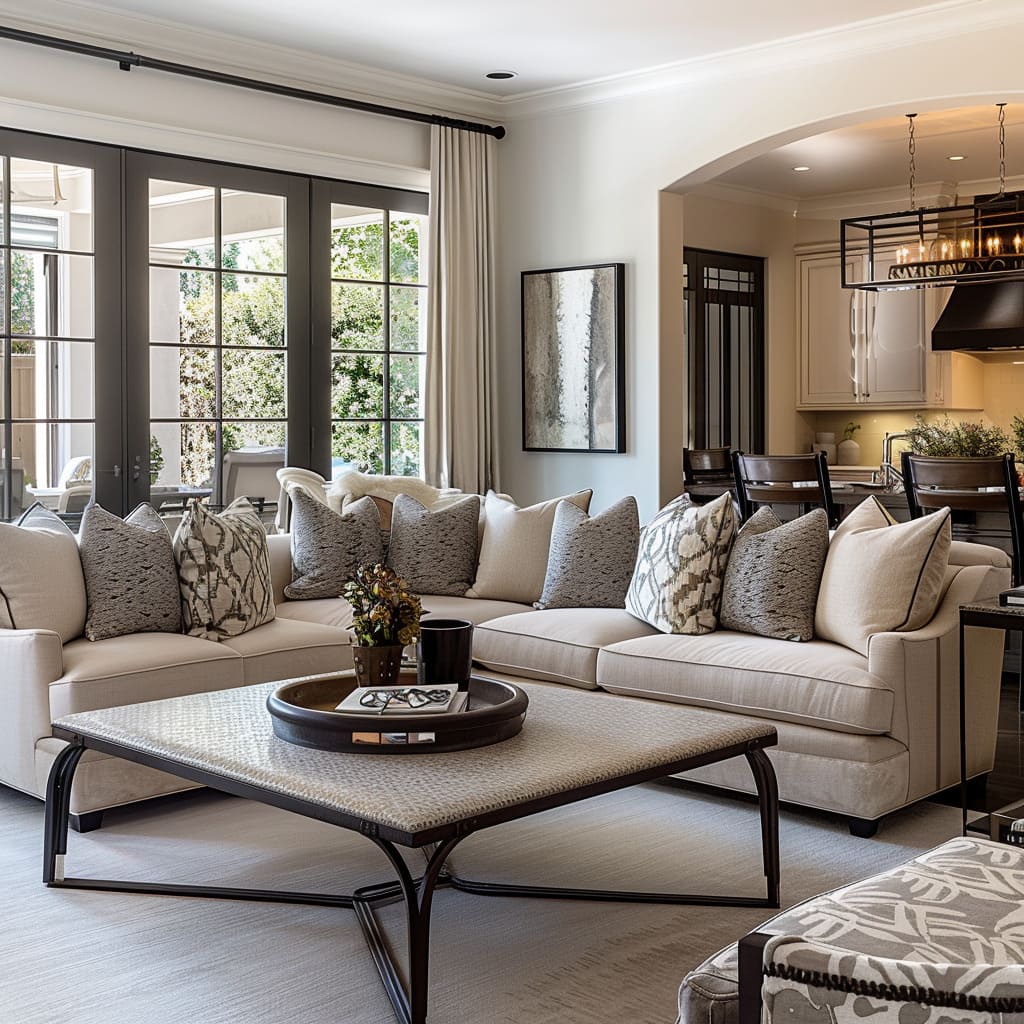Transitional design merges the best of both worlds, blending the comfort and warmth of traditional styles with the clean profiles and understated colors of contemporary design. This delicate balance achieves a timeless aesthetic that is both sophisticated and approachable.
Our homes are our sanctuaries, and the interior design choices we make are testimonies to our taste and lifestyle.
In this intricate dance of design elements, we find that every detail contributes to the overall symphony of the space. From the soft textiles that grace our touch to the strategic lighting that sets the ambiance, each feature plays a pivotal role in crafting a home that is both functional and visually arresting.
The following sections delve into the nuances of fabric choices, architectural cohesion, decor symmetry, spatial dynamics, and the seamless integration of form and function in furniture design—all of which culminate in the harmonious elegance that is characteristic of the Transitional style.
Fabric and Textile Flourishes
Soft drapery and accent pillows are not just accessories; they are vital components that infuse both elegance and comfort into a Transitional-style living space. The choice of textiles, from the gentle drape of curtains to the selection of pillows, adds layers of texture that enhance the room’s visual and tactile appeal.
These elements serve dual purposes—providing comfort while also acting as key aesthetic details that soften and complete the space. The fabrics selected often feature a blend of different weaves and materials, providing a touch of understated complexity to the room.
It’s not uncommon to see a mix of linen, silk, and velvet, each adding its unique texture and sheen.
Soft Drapery
The curtains selected for these spaces hang gracefully, often extending from ceiling to floor, creating a feeling of height and grandeur. Their gentle drape suggests a relaxed elegance, with a flow that is neither too stiff nor too casual.
These draperies may feature subtle patterns or textures that catch the light differently throughout the day, contributing to the dynamic aesthetic of the room. Additionally, they serve a functional purpose, allowing for control over natural light and privacy without sacrificing style.
Accent Pillows
Pillows scattered across the seating offer more than just a soft place to land; they are carefully curated to enhance the seating without overwhelming it. Often in varied shapes and sizes, they provide an opportunity to introduce complementary colors or accent hues that tie in with the overall color scheme.
Architectural and Color Harmony
Ceiling design, neutral wall colors, and crown molding are orchestrated to create a canvas that defines the space’s aesthetic foundation. The ceiling design, featuring simple yet elegant elements such as recessed lighting, imparts an open, airy feel while offering a modern twist on classic design.
The uniformity of neutral wall colors provides a versatile backdrop that complements various textures and finishes within the room. Dark window frames bring a dramatic contrast that frames the outdoor scenery, integrating it into the room’s design.
These features showcase the importance of architecture and color in establishing a room’s character, forming a harmonious backdrop that is both sophisticated and subtle.
Ceiling Design
The ceiling features simple yet elegant design elements, like recessed lighting and slight architectural enhancements, which provide a level of detail often overlooked in modern design. The integration of ceiling features creates a visual interest that draws the eye upward, contributing to a sense of volume and space.
This area may also showcase subtle textural differences or variations in paint sheen, enhancing the overall depth of the room.
Neutral Wall Color
The walls, painted in soft neutral tones, serve as a backdrop for the furniture and decor elements, promoting a sense of calm and continuity. These hues are carefully selected to reflect natural light, enhancing the sense of space and tranquility within the room.
They provide a canvas for the interplay of light and shadow throughout the day, adding a dynamic quality to the static walls.
Window Frame Color Contrast
Dark window frames provide a stark contrast to the light walls, drawing the eye to the views beyond the glass. They act as a visual punctuation, adding depth and definition to the space.
The contrast is not merely for aesthetic pleasure; it also highlights the craftsmanship of the windows themselves, turning them into feature elements of architectural beauty.
Crown Molding
The subtle use of crown molding adds a touch of traditional elegance and is often painted in a shade that complements the ceiling and walls, providing a seamless transition between the two. The molding may feature intricate profiles that contribute a sense of dimension and grace, echoing the room’s blend of contemporary and classic styles.
It frames the ceiling, much like the window frames outline the view, creating a finished look that caps the room’s design with sophistication.
Decor and Display Symmetry
Vase decorations, the tasteful display of books, and the discrete use of pattern exhibit the Transitional style’s affinity for symmetry and considered placement of decor. The decor’s arrangement and selection are executed with precision, creating an environment that feels both designed and organically evolved.
Each item, whether it is a standalone vase or a book, is chosen for its ability to contribute to the room’s symmetry and aesthetic appeal. These elements are not merely decorative but play a role in establishing the room’s personality and narrative, reflecting the inhabitants’ tastes while maintaining a cohesive design language.
Vase Decorations
Vases, whether they are used as containers for vibrant plants or as standalone objects, are carefully chosen for their shapes, textures, and materials, which complement the room’s color palette and texture. These objects often come in pairs or are grouped to create visual harmony, their silhouettes contributing to the room’s balanced appearance.
The vases’ placement is strategic, designed to draw the eye and create focal points that guide one through the space.
Tasteful Display of Books
Books are thoughtfully displayed, not merely for reading but as curated objects that indicate a lived-in, personalized space. Stacked or lined up on coffee tables and shelves, they introduce horizontal lines and breaks in the decor, often serving as the base for other decorative objects.
The display may feature books with spines that match the room’s color scheme or that add a pop of color, carefully selected for their size and visual impact.
Discrete Use of Pattern
Patterns are utilized in a subtle manner, their presence felt rather than seen outright. They contribute to the decor’s texture, often found in textiles like rugs or throw pillows, where they add depth without becoming the centerpiece.
The patterns maintain the room’s serene ambiance and are typically geometric or organic in nature, providing a gentle contrast to the solid colors that dominate the space.
In the thoughtful symmetry of decor, there is a balance struck between variety and unity, allowing individual pieces to shine while contributing to the overall aesthetic. The use of patterns, the placement of books, and the selection of vases are all part of a deliberate design choice that values order without rigidity, creating a space that is both comforting and visually engaging.
Light and Space
In Transitional style interiors, the strategic use of space and lighting plays a pivotal role in crafting an environment that feels both expansive and welcoming. Adequate visible floor space is essential, ensuring that each piece of furniture has its own ‘breathing room,’ which aids in reducing the feeling of clutter and promoting a more organized environment.
By utilizing vertical space effectively, the eye is encouraged to travel upwards, giving the impression of greater volume within the room. Light-colored ceilings work in harmony with this vertical emphasis to enhance the overall sensation of openness.
The implementation of layered lighting is a crucial element in these spaces, allowing for mood modulation and the highlighting of key design features. The resultant airy feeling is a hallmark of this design approach, conveying a sense of openness that is both aesthetically pleasing and psychologically uplifting.
Visible Floor Space
By ensuring that there is ample floor space visible around furniture pieces, designers create an impression of luxury and freedom. This openness allows for an unobstructed flow of movement within the room, encouraging a sense of tranquility.
The placement of furniture is done thoughtfully, with the goal of maximizing the utility of space while also maintaining a clear visual pathway through the room.
Vertical Space Utilization
The thoughtful placement of art pieces, decorative objects, and lighting fixtures along the vertical axis of the room not only draws the eye upward but also takes advantage of the often-underutilized upper portions of the space. This approach to design not only adds interest at every level but also contributes to the illusion of a taller space, enhancing the room’s grandeur.
Light-Colored Ceiling
A light-colored ceiling acts as a reflective surface, bouncing natural light back into the room and enhancing the sense of height and space. The choice of a light hue for the ceiling also creates a sense of continuity from the walls to the ceiling, providing a serene and open atmosphere that is both inviting and relaxing.
Layered Lighting
Layered lighting is a subtle art that involves the combination of ambient, task, and accent lighting to create a dynamic and versatile space. This strategic placement of various light sources allows for the creation of different atmospheres within the same room, catering to diverse activities and times of day.
Airy Feeling
The careful selection of furniture with clean lines and the arrangement that promotes openness contributes to an airy feeling, even in more compact spaces. By prioritizing scale and proportion, each item within the room is chosen to enhance the sense of spaciousness.
The resulting environment is one where airiness and comfort coexist, providing a respite from the outside world.
Furnishing and Functional Elegance
The interplay of form and function in furniture choices embodies a design ethos that holds elegance and practicality in high regard. Furnishings are selected not only for their aesthetic appeal but also for their comfort and utility, ensuring spaces are livable as well as lovely.
Subtle decorative trims on furniture strike a balance between adornment and restraint, offering a hint of intricacy without overpowering the piece. A variety in table surfaces introduces textural and material diversity, contributing to a rich sensory experience.
This philosophy extends to all aspects of furnishing, from the plushness of seating that invites long conversations to the tactile pleasure of surfaces under hand.
Balance of Form and Function
The furniture selected marries aesthetic appeal with practical usability, exemplifying the Transitional style’s hallmark of livable luxury. Sofas and chairs offer generous proportions for comfort, while their form maintains a sleek and clean silhouette that pleases the eye.
Storage pieces are designed to be as attractive as they are functional, hiding clutter and maintaining the room’s orderly aesthetic.
Subtle Decorative Trims
The furniture’s trim details, while discreet, are meticulously chosen to contribute depth and character. This may include piping along the edges of upholstery, a gentle curve on a chair leg, or a fine inlay on a wooden table, each detail contributing to the narrative of refined craftsmanship.
Variation in Table Surfaces
Tables present a medley of surface materials, each chosen for its unique texture and visual interest. A glossy glass coffee table may sit atop a soft rug, offering a sleek counterpoint to the textiles, while a matte-finished metal side table might provide a cool touch beside the warmth of a fabric sofa.
The interplay of these materials enhances the overall sensory experience of the space.
In Transitional interiors, the choice of furnishings is an exercise in finding harmony between the beautiful and the usable. Each piece of furniture is a testament to the idea that everyday objects can be works of art in their own right, without compromising on comfort or functionality.
The result is a space that is not just designed for living but crafted for enjoyment, radiating an elegance that is as much about experience as it is about aesthetics.
In conclusion, the art of Transitional interior design lies in its ability to provide a harmonious blend of styles that creates a space that is not only aesthetically pleasing but also eminently livable. It respects the principles of classic design while embracing the simplicity and clean lines of modern aesthetics.
This design approach brings out the soul of a home, creating environments that are welcoming, elegant, and timeless.
It caters to the nuances of personal preference while maintaining a cohesive design statement that speaks to quality and sophistication. Whether it’s the plush comfort of well-chosen furnishings or the tailored elegance of architectural details, each aspect of Transitional design contributes to a home that celebrates subtlety, balance, and refinement.
The true beauty of this style lies in its versatility and its ability to evolve with the inhabitants’ changing tastes, proving that in the realm of interior design, balance is not just a concept—it’s a lived experience.

